#also opens us up to the possibility of getting full episodic anime adaptations in the future. what the fuck
Explore tagged Tumblr posts
Text

jesus fucking christ
#I MEAN IT'S JUST THE MAIN STORY SO IT'S NOTHING LIKE WHATEVER BANDORI HAS GOING ON BUT..💥💥💥💥💥💥💥💥💥💥💥💥#THAT'S KIND OF INSANE STILL...!!!!!!!!!#also opens us up to the possibility of getting full episodic anime adaptations in the future. what the fuck#cause of death: the last wandashow livestream just in general holyyyy shit
18 notes
·
View notes
Note
With the ‘Harry Potter’ news, it has me wondering — how would you do the inevitable live-action ‘Danganronpa’ adaptation, were it up to you? And like you can’t say not to have it happen, because we know one day it will happen, whether we want it to or not. How would you go about it?
First rule: You can't do this as fast as the anime did. Maybe if we had 13 full hours instead of half-hours? Or maybe we just do more episodes. Let's give ourselves more time to develop these characters between (and even after) killings, let's give ourselves time to really dig into the investigations of the murders. But note that we have to be careful not to simply spend time developing the characters who are about to die. That'd just be a giveaway. I know it's hard to avoid with some instances (like Mondo and Taka's big developments in Chapter 2), but I think we can work it pretty well otherwise.
The most obvious temptation would be to make the story and cast more diverse/international. And it's easy to justify, given how Hope's Peak is described as this GLOBAL beacon of hope! We ARE trying to market this to a broader audience, as well; this isn't just going to be another quick-n-dirty Japanese live-action adaption. Those very rarely result in anything worthwhile. We gotta think bigger and broader here!
So with that in mind...
I say we keep the location of HP. Tokyo has plenty of clout on the world stage as an international hub, plus this locale makes it easier for us to justify keeping the "Monokuma" nomenclature for our bear nemesis. And of course we want that.
I've seen plenty of fans interpret darker-skinned characters as being people of color before, so why not run with it? Hagakure and Asahina can be black, maybe Sakura is of Arabic or Latina descent? Leon's probably a white guy. We probably change some names (at least surnames/family names) to suit this as well, making the cast be pulled from all over the world. .
...........yes, I am gonna get CONTROVERSIAL with these concepts. For example?
Fujisaki is a golden opportunity. We could make the character explicitly trans — that's the path of least resistance and definitely puts us in some fertile ground. I like the idea, although if we keep the story the same otherwise, it potentially villifies Mondo even MORE than he already was, so... that's a bit touchy. I don't know if we wanna go there or not. Maybe we do because it strikes a relevant chord, but maybe we don't because people love these characters so much in their other continuities and we want to leave that possibility open for even this new incarnation? Then again, I think we could also shift Fujisaki's nationality (and/or maybe their preferred gender) to make a statement about countries that value one gender over another. This would usually require Chihiro to be masking as a boy rather than as a girl, but perhaps we could achieve the same effect by keeping the genders as-is and having him hail from a Latin American country where daughters are traditionally preferred?
I think the weirdness of the setting and its bizarre sense of humor needs to be maintained as much as humanly possible. You WANT weird moments of funny character development in the midst of tragedy. You WANT funny, bizarre lines of dialogue in the middle of a life-or-death trial. That's core to the experience, and the more of that secret sauce you can directly copy/paste from the original script, the better! Maybe we let the blood be red instead of pink, SURE. But We wanna STAY WEIRD. The surreal trial grounds? Welcomed into live-action as-is. The robot bear? Maybe he looks MORE robotic, but he still is gonna do things no known robot can do in RL. He's gonna pirouette, he's gonna bounce around the room, etc. The insane executions? Eh, I might tone a few down SLIGHTLY. *Slightly*. But a "hyper-reality" approach similar to something like the Scott Pilgrim or Speed Racer movies seems entirely appropos in those moments. (........... thought of course, neither of those movies made money in their initial run, so I might be setting us up for an initial faceplant of failure, but you know what? I'm okay with that if we can grab the long tail of profit those projects ultimately gained over the years. Besides: I'm doing my best to give this global appeal, and furthermore, there's no way in hell this project should cost as much as those aforementioned movies or even *close*. This ain't gonna be a series that costs "Netflix Cowboy Bebop" money, FFS. For one thing, it's almost entirely going to be shot on a limited number of indoor sets! Shit, you only have to make a single hallway corridor if you just adjust your shooting angles and dress it accordingly: Take some pages from Robert Rodriguez's school of low-budget shooting.)
Now, so far I've mostly been describing what I would change or CONSIDER changing for such a project. So what's NOT changed? Basically everything else! The cases are mostly gonna stay the same. Like, maybe I'll make Celestia act less blatantly OOC in when the group is menaced in Chapter 3 so she's a lot less obvious of a culprit, but y'know, that's a minor tweak. Maybe the "communication breakdown" subplot in Chapter 4 can be altered to be more acceptable/believable for international audiences that are gonna be screaming "JUST FUCKING TALK ABOUT IT." And yet? All the broad strokes can definitely remain intact. They've GOTTA. The same basic characters, the same basic deaths, the same basic final reveal. Junko takes the stage and goes manic, shows us a devastated world, and we leave on the same basic wrap-up where the huge front door opens and we don't see what's beyond the school as light fills the room.
I think there's a lot of potential to deliver something satisfying through the above while still making something attention-grabbing and marketable to a broad audience. But if this worked out, I'd have to figure out how not to break the budget on an adaption of the tropical-set DR2 :P
3 notes
·
View notes
Photo

Here is my somewhat-detailed analysis and thoughts of the Tokyo Mew Mew New Teaser Trailer. Sorry that this post is a bit late. After all of the excitement settled down, my body reminded me that I was only running on 3 hours of sleep from the previous couple of days XD. So after a longer than usual night’s sleep, I finally got to finish this up.
Click below to read the whole post.
First off, this whole beginning with the “The Earth” introduction already hit me with so much nostalgia. I also give props to the animation team. They could’ve done what the manga and old anime did and just kept them as still, dark images, but they really went the extra mile in giving us these gorgeous shots:




I also noticed that the introduction has been updated slightly. In the manga and old anime, it was mentioned that “Over 2,500″ animals were endangered. Sadly, after 20 years, the narration now has to say that it’s “Over 15,000″.
And, of course, the intro ends with a shot of our girls and it is so beautiful!!!!

Then we get a new song from Smewthie, which will most likely be the opening, titled “Cat!! Shite Supergirls”. Can’t wait to hear the whole thing. Judging from the trailer, it seems to go through the basics for chapter 1 of the manga, with Ichigo seeing Aoyama during kendo practice (Where’s Moe and Miwa??). Also, while not in the trailer, there is a screencap of Aoyama with Ichigo floating around on news sites, which is most likely during their date at the museum.



Then we see Ryou and Keiichiro for the first time and it seems that their lab has gotten a big upgrade in the last 20 years, to the point that they make the activation of the Mew Project in the form of a BIG RED BUTTON!! XD


I’ve seen many posts already who are kind of giggling at the fact that Kei-kun hasn’t really changed much, design-wise, when comparing them all to the original anime. As they have said, and I agree, “Can’t improve on perfection!” X3
And now we get into what seems to be a scene that strays a bit from the original manga. When the Mew Project is activated, we only see 4 colored beams of light and only Ichigo, Retasu, Bu-ling and Zakuro get infused. Minto seems to be missing.



And then the trailer shows her later, already transformed, telling Ichigo to fight. This seems to imply that, in this adaptation of the story, Minto has already been infused and is teaching Ichigo what to do. Right now I’m not sure if that’s the case or if the trailer’s footage is being manipulated to make it seem that way. I guess we’ll have to wait and see when the first episode airs.


I personally don’t mind the change, if that is how it’s going to be. I’ve re-read the manga constantly in these past 19-ish years. So I already know its story inside and out. So seeing a new anime with it’s own, unique twists and turns will keep things interesting. Not to mention the possibilities of some story expansion.
There are some that are also afraid that that means that Ichigo’s first interaction with Ryou might be omitted since she’s already transformed and interacting with Minto. That might happen but there’s also a chance that it might be kept in. Remember, in the manga, Ichigo’s first transformation was activated when she was struggling to get away from Ryou and then fell out of the tree.

The trailer clearly shows her transformation activating as she’s falling from somewhere. So her interaction with Ryou might still be there.

Then we see something that we didn’t really see in the manga; some actual fighting action.

If there’s some hand-to-hand combat, then I’m all for it. While I love the manga, the fights in it were very simplistic (Basically, just them getting their weapons, shouting the attack name, kaboom! and then it’s done.). So I’m sure that the animation team will have to be really creative to keep the fight scenes engaging.
Then we see Ichigo with her weapon and saying her first catchphrase (In full gratitude, I’ll be of service ~ Mew!!). And can we all just agree that the StrawBell Bell looks absolutely beautiful?!


Also, as I feared, they gave the Parasite Aliens/Para Para, the cute faces they had in the manga. That makes Masha even more terrifying than the trailer’s already shown!! Seriously, Masha now has this whole galaxy/blackhole in his mouth!!

MASHA, WHAT ARE YOU?!!!
And then the trailer ends on a serious note of Aoyama saying that humans are sinful beings. Not exactly sure when this will take place. Seeing as all of this is most likely episode 1 footage, I wonder if this is during the museum visit. I can’t really tell since we only see his face.

And that’s it for the trailer. As for voice acting and such so far, the girls are beginners to VA work, and it shows a bit. But they’re pretty good for first-timers and I’m sure they’ll improve quickly. The VAs chosen for the guys are very good. While I’ll miss Midorikawa-san as Kei-kun, I expected a total recast and prepared myself. However, Shirai-san has Kei-kun’s mannerisms and speech inflections down pretty good. I welcome him as new Kei-kun X3.
Nakamura-san is a pretty good fit for Ryou. Some seem to be off about Aoyama being voiced by a guy but that’s something that I’ve also expected. It seems common for Japan to cast guys for younger male roles these days, unless they’re really young children. However, Uchida-san is a great VA and I’m sure anyone who has doubts will warm up to him eventually X3.
Speaking of Aoyama, some have noticed the change in skin-tone. Now before you start shouting “Whitewashing”, Aoyama was never tanned in the manga. In fact, he was very pale:


Seeing as how the reboot has been using a mix of manga and old anime colors for the reboot, it seems that they tried to compromise with Aoyama by giving him a lighter skin tone that’s a bit darker than his manga counterpart, but also give him his hair and eye color from the old anime (although his hair in the reboot is now a lighter color).
It seems that the same happened with Ryou, except they decided to keep his darker skin-tone from the old anime, even though he was lighter in the manga. My guess is because the tanned-skin, blond-hair look has been kind of popular in anime nowadays. So they just decided to keep it that way.
Now, I know some of you are wondering, “WHERE ARE THE ALIENS?!!” Well, considering that the trailer mainly showed scenes that matched with chapter 1 of the manga, and Quiche doesn’t appear until the end of chapter 4... The answer is pretty self-explanatory. We most likely won’t know who will voice Quiche until a few weeks before July, in which there will most likely be a more detailed trailer.
While I hope that that news will include the VAs for Pie and Tart, I’m not completely sure about that since we don’t even see them in the manga until they appear briefly in the last chapter of volume 2. I guess it’ll all depends on how much they decide to expand the story.
Well, I think that covers all of my thoughts on it and answers a few questions that everyone else has been wondering about. I can’t wait for it’s premiere in July!! I hope everyone else is looking forward to it too X3.
131 notes
·
View notes
Text
I deeply appreciate how ATLA depicts all the main characters responses to trauma. Aang’s, for me, however, stands out for its rareness in media. And we are not hammered over the head with the idea that Aang (or any other characters) repeatedly act certain ways because of a single traumatic event. Sure, there are key moments in our lives when a certain event comes to the forefront, but no one experiences the world as constant flashbacks. Rather, we see only in retrospect the way our sarcastic sense of humor or our heightened friendliness were protective responses to a deep emotional injury. Being able to understand Aang’s approach to loss is essential for the show. The structure of the series is founded on his arc (despite an incredible foil provided by Zuko). Our little air nomad initially confronts the loss of his people with a full-on meltdown in the episode “The Southern Air Temple,” where Katara’s offering of familial belonging soothes him. But this kind of outburst is not Aang’s primary response (and actually the literally out-of-character apocalyptic tantrums align with Aang’s overall process of grieving). Instead of constantly brooding (hey Zuko!), Aang leans heavily toward the monk’s pacifist teachings and toward his assumed destiny “to save the world.” He becomes overtly accommodating and joyful, constantly trying to see “the good” in everything with a perfectionist’s zeal. This is not to ascribe his bubbliness only to his trauma. Rather, he comes to emphasize this part of his personality for reasons related to the negative emotions he struggles to face. Book 1: Water
In the first season, Aang is simply rediscovering his place in the world. “Water is the element of change. The people of the water tribe are capable of adapting to many things. They have a sense of community and love that holds them together.” This is vital to Aang as he initially faces his experience. He won’t get through this if he is not prepared for his life to change. Even if he hadn’t been frozen for 100 years, his world would never be the same. This fact involves eventually finding new people that he feels safe with. After such a massive loss, he’s learning who to trust, and also often making mistakes; not only does he find Sokka and Katara (and I’d argue he’s actually slow to truly open up to them), this is the season where he helps save a fire nation citizen who betrays him to soldiers, befriends the rebel extremist Jet, and attempts to befriend an actively belligerent Zuko (his moral complexity had only JUST! been revealed to the kid!). He’s constantly offering trust to others and seeking their approval in opposition to the deep well of shame and guilt he carries as a survivor of violence. This is also the season where Aang swears off firebending after burning Katara in an overeager attempt to master the element (one will note how fire throughout the series is aligned with, above all else, assertiveness and yang). Aang is so eager to be seen as morally good to others that he refuses to risk any possible harm to them. And asserting himself carries a danger, in one sense, that he might make a mistake and lose someone’s positive regard, and, in another sense, that he is replicating the anger and violence he’s witnessed. He has no relationship to his anger at this stage of his grief, so it comes out uncontrollably, both in firebending and the Avatar State. It’s through the patience of his new family that he can begin to feel unashamed about his past and about the ways his shame is finding (sometimes violent) expression in the present. Book 2: Earth In the second season he begins to trust himself and stand his ground. Earth, after all, is the element of substance, persistence, and endurance. The “Bitter Work” episode encapsulates how Aang must come to a more sturdy sense of his values. First, there is the transition of pedagogical style. While Katara emphasized support and kindness, Toph insists on blunt and threatening instruction, not for a lack of care towards Aang. Instead, it’s so Aang learns how to stop placing the desires of others above his own--to stop accommodating everyone else above his own needs. Toph taunts Aang by stealing one of the few keepsakes from the monastery that he holds onto. This attachment to the lost airbending culture is echoed in the larger arc with Appa. And, by the end of this episode, it is Aang’s attachment to Sokka that allows him to stand firm. This foreshadows the capital T Tragic downfall in the “Crossroads of Destiny.” Aang gives up his attachment to the other member of his new found family, Katara, despite his moral qualms. Although he has access to all the power of the Avatar state, his sacrifice is not rewarded. Season 2 illustrates Aang coming to terms with his values. He is learning about what he stands for, what holds meaning to him. Understanding himself also includes integrating his grief, and there’s a lonely and dangerous aspect to that exploration. We see Aang’s anger and hopelessness over longer stretches rather than outbursts in this season. It’s hard to watch and hard to root for him. That depressive state leads to actions that counter his previous sense of morality, as he decisively kills an animal, treats his friends unkindly, and blames others for his loss. Letting these harsher feelings emerge is an experiment, and most people discover their boundaries by crossing them. Finding ways to hold compassion for himself, even the harm he causes others, is the other side of this process. Our past and our challenging emotions are a part of us, but they are only a part. Since Aang now has a strong sense of community and is learning to be himself rather than simply seeking validation, we also see him having more healthy boundaries with new people. He’s no longer befriending villains in the second season! He’s respectful and trusting enough, but he’s not putting himself in vulnerable situations nor blindly trusting everyone. Instead, he’s more likely to listen to his friends’ opinions or think about how the monks might’ve been critical towards something (they’re complaints about Ba Sing Se, for example). By knowing what he cares for, he can know himself, the powerful, loving, grief-struck monk. And he can trust that, though he might not be everyone’s favorite person, he does not need to feel ashamed or guilty for who he is or what he’s been through. Book 3: Fire However, despite a sense of self and a sense of belonging, Aang and the group still find themselves constantly asking for permission throughout their time in Ba Sing Se. It’s in the third season, Fire, that initiative and assertiveness become the focus. And who better to provide guidance in this than the official prince of “you never think these things through,” Zuko. It’s no longer a time for avoidance or sturdy defensiveness. It is the season of action. Fire is the element of power, desire, and will, all of which require us to impact others. We see the motif of initiative throughout the season: the rebels attempt to storm the Firelord on the Day of the Black Sun; Aang attempts to share his feelings and kiss Katara; Katara bends Hama and a couple of fire nation soldiers to her will. In each of these examples, the initiators face disgrace. Positive intent does not bring forth success, by any means, only more consequences to be dealt with. This is perhaps Aang’s biggest challenge. He is afraid that his actions will fail, or worse, they will succeed but he will be wrong in what he has chosen. The sequencing in the series, here, is important. We have already seen how Aang has worked to care for (and appreciate) the well-being of others and how he has learned to care for his own needs. With this in mind, he should be able to trust that his actions will derive from these wells of compassion. But easier said than done. Compassion can also trap him into indecision, hearkening back to his avoidant mistake in the storm, in which the whole mess began. Aang’s internal conflict, here, becomes more pronounced as the finale draws nearer. I think it’s especially significant that we witness Aang disagreeing with his mentors and friends. He must act in a way that will contradict and even threaten his sources of support if he is to trust his own desires. Even the fandom disagrees about the choice Aang makes, which further highlights the fact that making a decisive choice is contentious. There is no point in believing it will grant you love or admiration or success. For someone who began (and spent much of) the series regularly sacrificing himself just to bring others peace, Aang’s decision to prioritize his own interests despite the very explicit possibility of failure is the ultimate growth his character can have and the ultimate representation of him processing his trauma. (This arc was echoed and made even more explicit in many ways with Adora in the She-ra finale.) The last significant time Aang followed his desire, in his mind, was when he escaped the Air Temple in the storm. To want something, to trust his desire and act on it, is an act of incredible courage for him, and whether it succeeded or failed, whether anyone agrees or disagrees with it, it offered Aang a sense of peace and resolution. Now I appreciate and love Zuko’s iconic redemption arc, but Aang’s subtler arc, which subverts the “chosen one” narrative and broke ground to represent a prevalent emotional experience, stands out to me as the foundation for the show I love so much.
#aang#avatar the last airbender#trauma#ptsd#cptsd#atla#atla meta#zuko#redemption arc#adora#spop#catradora#catra#also no one will read this far in the tags but this is phoebe buffay's arc on friends
6K notes
·
View notes
Text
Two cents of ramblings on “Yūkoku no Moriarty” (‘Moriarty The Patriot’) (Anime) - Season 1...
...and why I STRONGLY recommend it.
GENERAL DATA
Title: Yūkoku no MORIARTY (憂国のモリアーティ “Moriarty The Patriot”)
Media: Anime television series
Adaptation of: Yūkoku no MORIARTY (憂国のモリアーティ “Moriarty The Patriot”) shōnen manga by Takeuchi Ryōsuke, illustrated by Miyoshi Hikaru.
Genre: Crime, Mystery
Directed by: Nomura Kazuya
Written by: Zappa Gō
Studio: Production I.G
Original run: October 11, 2020 December 20, 2020
Episodes: 11
WARNINGS: There's murder, drug abuse, mistreatment of minors, discrimination, implication of sexual abuse of minors.
The plot in short: The story is a very loose retelling of “Sherlock Holmes” by Conan Doyle, however this time the main protagonist is professor William J. Moriarty, who’s now represented as a man committing crimes in an attempt to fight the corruption of the English nobles so as to create a better world.

HOW DID I STUMBLE INTO IT
The title got me curious and since Studio I.G usually makes very good series I decided to try it out.
THINGS YOU MIGHT WHAT TO KNOW BEFORE TACKLING THIS
I’ll reference the manga version on which this anime is based, the manga “Fushiji Fushiji” (ふしぎふしぎ ‘Wonder wonder’) by Yamazaki Hiroshi, the manga “Death Note” by Ōba Tsugumi and illustrated by Obata Takeshi, the anime “Code Geass: Hangyaku no Lelouch” (コードギアス 反逆のルルーシュ ‘Code Geass: Lelouch of the rebellion’). Oh and the movie “The silence of the lambs”.
MY TWO CENTS ON IT
THE SHORT VERSION… or what I can tell you about this while trying to keep spoilers at the very bare minimum.
Opening & ending: The series uses as opening “DYING WISH” by Tasuku Hatanaka, and, as ending theme, “ALPHA” by STEREO DIVE FOUNDATION. I quite liked both song and I love, love, love, both the opening and the ending. They’re both awesomely drawn and well matching with the songs, the opening is filled with symbolism and foreshadowing which makes it pretty intriguing. The ending, if possible, is drawn even better, even though it’s mostly a panning of still images and it too drives forward an interesting message.
The plot: This first season loosely covers the first 4 volumes of the manga (and a chapter from vol 5). Loosely because they actually skipped 3 arcs and added one. Each arc is a case the Moriarty brothers take, but the structure of its presentation might differ from case to case. This season works mostly an introduction to the characters and the story but we also see an evolution in the situation as the characters start to interact and the Moriarty brothers’ plan begins to unfold. Personally I enjoyed the series both for the overarching plot that it starts and for the episodic plots that it contains.
The characters: As this season covers only a small part of the manga we get introduced only to a part of the full cast and since not all the arcs of the manga are covered Fred and Moran are less developed than their manga counterparts, the anime focusing more on the Moriarty brothers as well as on Holmes and Watson. Still, the characters come out as interesting and likeable and there’s a care in depicting the minor characters involved in the various stories, even though they often get to end up being simplified a bit, often either to tame down the story or due to time constraints.
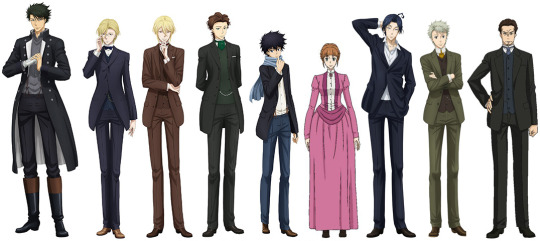
The visual: Personally I think the anime did a good work of reproducing Miyoshi Hikaru’s work. The character design is faithful enough to the one of the manga and there’s this amazing cure in the background which I really love. Here and there however I feel the quality is a little less than good though it will probably get fixed in the dvd release. There are some interesting stylistic choices too so it’s still very pleasurable to watch.
The BGM: Oh, no doubt I love it. I truly enjoyed Tachibana Asami’s work on this series, the music well underline the mood, stays with you and it’s pleasurable to hear.
Overall: It’s a good, well done and intriguing first season. I would personally wish it had been longer, so as not to cut arcs and take more time exploring the characters but nowadays seasons are mostly short so I guess they couldn’t do things differently. It’s still a good work and a good transposition, even though if you want to know more about the characters I recommend you to read the manga.
THE LONG VERSION… or what I loved and hated about this with, of course, TONS OF SPOILERS.
Let me dig a moment into the opening and the endings as I think they really did a good job here. The opening really get you in the mood of the series and gifts you with little gems of foreshadowing and symbolism.
It starts with the sun disappearing so we find ourselves in the dark side of the day and of London. Then it well introduces the Moriarty brothers and their helpers (Fred and Moran) and then send them walking for the night streets of London.
The scene is interrupted by the nobles entertaining themselves with a masked ball… uncaring of how a lily (usually used as symbol of purity and innocence) lays in a pool of blood. The only one who pays it any mind and picks it up is William Moriarty, which basically foreshadows the whole plot of the story, the nobility is uncaring of other people’s suffering while he wants to help. As the lily seems to redden further in blood we basically get a flashback of a poor girl selling lilies having her flowers tossed on the ground a noble deliberately stepping on them with cruelty while she’s desperate and then disappears in red petals. The lily in William’s hand, now completely red, burns.
I mean, this whole scene isn’t just beautifully drawn and takes care to match with the music in both melody and lyrics but it’s of an awesome symbolism for the series down to how London will burn in the following season.
We’re treated with some more symbolism, fruits which quickly grow rotten, a poor street and a cemetery, a statue of the angel of death then, in a maze of thin threads, Sherlock appears and this too symbolizes how he’ll have to untangle the skein of the Moriarty case. Sherlock runs with Watson and the next we know is he and William are pointing their respective guns at each other head, foreshadowing another scene in the next season.
Then a bird flies above them (birds, I’m not sure if they’re crows or ravens, are used to symbolizes the Moriarty brothers) and, superimposed to it, we see hands being joined and then the other 2 Moriarty brothers and William and Fred, so as to symbolize how they’ll join forces with William.
We get a flashback of the Moriarty house burning down and then of William’s eyes. To better tie him to the bird, his eyes are then covered by bird’s wings and we see 3 birds (symbolizing the Moriarty brothers) fly away. The song’s pace get fast and we’re showing Fred and Moran fighting, Albert smiling (as he basically fights from behind the scenes, using his own power to aid his brother’s plan) and then Louis fighting as well.
William then, in a scene that reminds me a lot of the opening of “Zankyō no Terror” let himself be fall from what we’ll discover is the big bang tower, watching the city as it burns, and foreshadowing how he plans to end his plan. As if this foreshadowing isn’t enough, the scene switches again, William joins his companions in a room and points a gun at his own head. All this is beautiful animation, smooth transitions and intriguing storytelling that well fit with the music and the lyrics of the song which I recommend to read as you enjoy it. And I love it.
And what to say of the ending?
It starts depicting a simple episode of the Moriarty brothers’ childhood. They’re just having fun painting some walls with beautiful scenery (which is symbolism for how they are hoping in real life that, with their actions, they can paint a beautiful world).
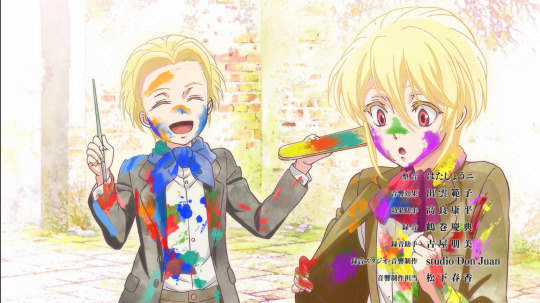
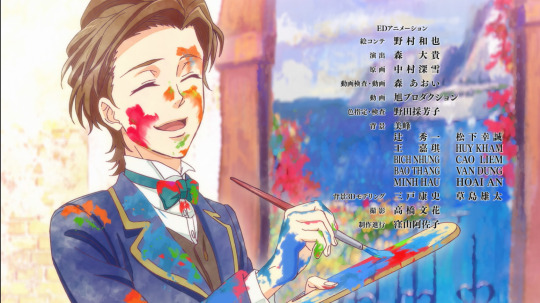
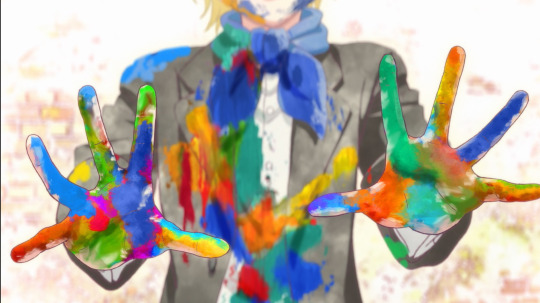


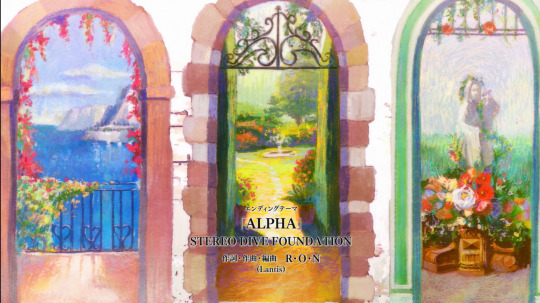
I love how they did the colouring, it reminds me of watercolours, I liked how they had bright colours all over the characters, how the clear colouring of the scenery makes it look like as if everything is filled with light. Although it’s made by still images on which the camera pans, it has its own dynamism, the characters in motion and expressive. It reminds me of the manga “Fushiji Fushiji” (ふしぎふしぎ ‘Wonder wonder’) by Yamazaki Hiroshi whose message was just to discover the wonderful beauty of the ordinary all around you.
There’s an interesting contrast between the lyrics and this calm and happy moment, well harmonized by the music that still seems happy and dynamic but it has a purpose.
In fact the hopefulness and the wonder are kind of shattered when, at the end, we have a really clever transition.
The image moves from the brothers looking at the painting they made in front of them, to the beautiful images painted behind them, as if to hint those images, those happy moments will become their past, something they’ll leave behind, and then the image quickly shift and we see the three brothers, now adults, under the rain and among ruins (are those the ruins of the place they painted?). Albert has a bittersweet expression, the corner of his lips are turned up but the rain makes it look as if he’s crying,
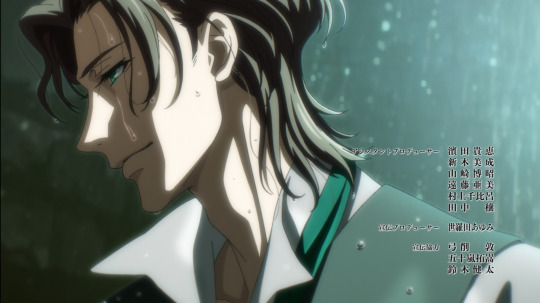
Louis keeps his face down, in the shadows and is not smiling,

William is smiling but it’s a smile that doesn’t reach his eyes, which are on the ground, a forced smile.

The rain soaks them like tears, in a way it washes away the memory of the colours that covered them because, despite their beautiful hopes and dreams, what they had to do was dark and painful and definitely not nice, the sad contrast between idealism and realty.

The songs end showing the Moriarty coat of arms on the ground, in a giant puddle (or outright under water) the words ‘Je crois en moi’ (“I believe in myself”) clearly visible as the song ends with “There is no turning back” which fits so well with how the Moriarty brothers can’t return to that time of their childhood… how they can only advance until the end.
So okay, said this let’s move on the story.
As I said the anime starts with an original only episode. Why this choice when they instead cut manga arcs? Why not to animate another manga arc instead than create a new one that’s loosely based on “The hunting of the Baskervilles”? Why not to just animate “The hunting of the Baskervilles” instead? Why did we ended up having “The earl’s crime” instead?
My guess is that the anime was very invested in making sure we would know we’ve to root for the Moriarty brothers, but also that we were aware that, although they want to create a new world, they’re not Yagami Light from “Death Note” but are closer to Lelouch Lamperouge from “Code Geass”.
So what they do?
They first remember us who was Professor Moriarty, the Lord of Crime in Conan Doyle’s tales by starting the story showing us a kid reading “Sherlock Holmes – The final problem” book and, as his father gives the book a look, his gaze falls on a photo of Professor Moriarty (and the image of Moriarty is a copy of the illustration by Sidney Paget which accompanied the original publication of “The Final Problem”) and then we hear…
Narrator: This is the tale of the man who confounded even the great detective Sherlock Holmes… Professor Moriarty, the Lord of Crime.
…and, as we hear so the image switches from the picture of the book to an image of William Moriarty as we’ll see him in the series, all busy writing mathematic expressions on a blackboard, but then everything seems to take fire as he keeps on writing and then everything fades to black.
From this start we might even think the story was going to represent Moriarty as we know him from the books… an evil mastermind… though the story would start from his past, as the Moriarty we see writing on the blackboard is clearly younger.
And this is a device to raise interest. Then the opening starts.
I’ve discussed about how awesome the opening is above, but when you first see it, you might not catch up all the symbolism or only part of it and therefore fail to see the full picture and this too is a good idea.
Then the episode starts and in a nightmarish red atmosphere (as every image is painted with a red filter) someone chases a poor kid, captures him and makes clear he’s going to make something terrible to him.
We don’t clearly see who’s doing this so we might be tricked into thinking it’s Moriarty himself… but then it turns out the guy implied to be a young Moriarty is reading on the newspaper about the kidnapping and this can divide the audience in 2 groups, those who realizes by the glimpses we saw of the abuser he can’t be Moriarty and those who didn’t.
And here the anime does another clever thing with this bit of dialogue.
Louis: It’s hard to believe a human being could do such a thing. William: (smiling) It’s human to think that this could not be the work of a man.

The fact William can smile in such a way for such topic feels suspicious, the anime plays with our pre-existing ideas of how professor Moriarty is evil. Is he bragging when he talks with Louis? Or is he genuinely analyzing the case? Or is he planning to offer his services to the child murderer?
And then, as he studies the case we get this line…
William: People’s fancies do not get taken by that which is out of view. They want what they see.
…and doesn’t all this starts to look like a reference to “The silence of the lambs”?
Clarice Starling: The thing is that Lecter said everything we need to catch him is in these pages. Ardelia Mapp: Dr Lecter said a lot of things. Clarice Starling: He's here, Ardelia. Ardelia Mapp: Is this Lecter's handwriting? "Clarice, doesn't this random scattering of sites seem desperately random - like the elaborations of a bad liar? Ta, Hannibal Lecter." Clarice Starling: "Desperately random." What does he mean? Ardelia Mapp: Not random at all, maybe. Like there's some pattern here...? Clarice Starling: But there is no pattern or the computers would've nailed it. They're even found in random order. Ardelia Mapp: Random because of the one girl. The one he weighted down. Clarice Starling: Oh, Fredrica Bimmel, from... Belvedere, Ohio. First girl taken, third body found. Why? Ardelia Mapp: 'Cause she didn't drift. He weighted her down. Clarice Starling: What did Lecter say about..."First principles"? Ardelia Mapp: Simplicity... Clarice Starling: What does this guy do, he "covets". How do we first start to covet? Ardelia Mapp: "We covet what we see -" Clarice Starling: " - every day." Ardelia Mapp: Hot damn, Clarice. Clarice Starling: He knew her.
Now, child murder is one of those crimes that are considered morally terrible by a lot of people included criminals. If you add to this a comparison between the criminal and the culprit of “The Silence of the Lambs” you create in people’s mind the image of a monster.
And, as William keep on talking, it’s clear he’s not the culprit, but the fact he claims…
William: This may be a case in which we become involved.
…might still make people to wonder on how he would get involved.
Professor Moriarty wasn’t a detective, he was a crime consultant, a lord of crime, so what is he up to?
And there’s also something else that’s incredibly smart, the whole mention of how a victim was an orphan with William discussing the lack of relation between noble men and orphans.
Louis: Still, one of the victims… …appears to have been an orphan who slept on the streets. What of him? William: Ah, yes. Noblemen and orphans—there is nothing quite so far removed as the two worlds in which they live. Assuming that’s the case, it could be the clue that leads us to our culprit.
And at this point the dynamic between the two starts to resemble the one people would expect between Holmes and Watson but there’s more in this line that just that, the foreshadowing William knows personally the distance between nobles and orphans.
And then Albert appears and goes visiting the father of one of the victims, Eden, but who pays attention to the discussion might notice that he’s an earl… and the episode’s title was “The Earl's Crime” so is he the culprit?
Meanwhile as we are introduced to the poor father, we start to pity him. That man is destroyed from pain for his loss… and he’s a nice, humble man, a loving father who lost a beloved child. We sympathize with him, we want justice for him.
Then William approaches a boy… but in case we still have doubt it’s clear he’s merely doing so to investigate on the case… and then William and Louis are joined by Albert and their goal is made clear, provide the poor father with a chance of vengeance.
So, now we know for sure William, Louis and Albert aren’t involved in the child murders and are hunting the culprit… and we all side with them because what he did was terrible… but just in case we need an extra push let’s have Earl of Argleton, aka the culprit, be introduced… and at the same time William confirm what we assumed, that he is William James MORIARTY.
Then William, engaging conversation with the Earl, acting as if he were Sherlock Holmes (to the point even the Earl observes he seems a detective) points out from where the various objects the Earl is wearing come. The Earl is impressed by his deductions but for us, viewers, the scene is a further proof the Earl is guilty because all those objects come from the shops from which worked the murdered kids. And, as William progresses, even the Earl realizes that’s the point he’s trying to make.
And then we’ve William say this.
William: You prefer the meat of young hares, yes? Tender, not yet fully developed, and so fresh that it still drips with blood, which you take your time to savour, nice and slow.
And, as he says so, we see the shapes of young boys running, and they seem naked, and they’re smiling and it’s clear that’s how the earl sees them… Previously we were merely said the killer ‘target young boys for their amusement, and then, after they’re done, slaughter them’.
You might even think the amusement was in the hunt… but now it has been made clear the Earl lusts for those young boys. And if killing a child is considered one of the worst crimes, it pales to sexually abuse a child. The series as now successfully painted the Earl as the most disgusting monster ever.
So why is this so very important?
Because you ends up agreeing with William that this person deserves to be killed, that the world would be better without him. And this means that in the viewers’ eyes the figure of Moriarty despite being called ‘crime lord’ and ‘crime consultant’ will be viewed as someone who bring justice, not something like Yagami Light who forced his own justice to the world, but something we all agreed upon is justice.
The Earl is a monster. He deserves to die.
This episode also becomes a chance to let us glimpse Lois in action. In the manga he would start to be more active much later, ironically exactly in “The hunting of the Baskervilles” while the anime decided to put him immediately at work. While this choice sacrifices part of the character arc of both Louis and William (there was a reason why Louis wasn’t as active at the start), since “The hunting of the Baskervilles” was cut, it made sense to put it here.
There’s also the beautiful artistic choice to show William arriving driving a coach as the scene is completely covered by fog with the sounds somewhat muffled.

It feels creepy, like the death itself is getting on that place. And then it turns out the tables are turned, the coach was likely Earl of Argleton’s one and this time it was his turn to be kidnapped, taken there and tied over as he had done countless times with the boys… and it’s William, instead than him, the one who gets inside the place, his red eyes shining as he gets inside.

And really, the colouring is so brilliant here because it’s mostly greyish brown and white but then there are some colours that shine and are clearly visible.
William’s eyes and tie which are red… his blond hair… Eden’s red tie and his empty blue eyes… the Earl’s fear filled blue eyes…
And then there’s a flashback in which William is shown talking with Eden.
Eden: Are you certain you can grant my wish… …Sir William? William: Mr Eden, what you are proposing to do Is unfortunately categorized by this twisted world as a crime. Knowing this, does your resolve remain unchanged?
We’ve a flashback in a flashback, with Eden thinking at what happened to his poor son before he nods.
William: Very well. Then I, crime consultant William James Moriarty, accept your request.
And with this we go back to the present and to Eden pulling out a pair of scissors. It’s clear what he wants to do and William urges him to be quick about it. We see nothing of the gruesome scene that happened after, just darkness and a scream, but we’ve gotten to a point where few of us would deny a poor father the chance to avenge his own son abused and murdered by such a monster.
Light returns as William lights a match and this too symbolizes how William’s actions bring light in a world filled with darkness. Birds fly away and raven’s feather flutter around him so that we now will get the symbolism in the opening.
Eden joins him and William kindly offers him his tissue so he can clean up before he personally takes care to close the door of the place in which Earl of Argleton was killed. We don’t see the Earl, just some blood but it’s clear it should have been a gruesome mess and this too is clever.
Some anime like to show things up but merely implying is much more powerful because you can actually imagine a scenario as bad as you prefer.
The episode ends showing Eden being back to normal. Although this is kind of a dangerous message to give out (vengeance by murder bringing you peace, I mean) it makes sense.
The ending for this episode is just a black screen on which credits runs but it makes sense to postpone seeing the images in the ending AFTER this episode, when we’ve seen “The scarlet eyes” and got to know the young versions of the Moriarty brothers.
After the ending the anime leaves a final bit explaining how the Moriarty brothers went through the trouble of erasing everything so that the death of the Earl and his coachman don’t even make it to the news, so that they successfully created the perfect crime.
With this the episode ends and now the series has successfully created a mind setting in which we know William helps people in committing terrible crimes… but in a way we see him as Robin Hood, as if those crimes were an act of justice because those people were terrible but due to social differences and privileges they were also untouchable and this was the only way to punish them.
William is not Yagami Light, who passed judgement on people because he felt better than them, he really feels a lot more like someone who brings justice were none can be obtained but with terrible methods. Like Lelouch Lamperouge, he took what was helpless and gave him power so that they could obtain justice.
Long story short, this episode exist to make as easy as possible to see William as a good guy despite committing crimes and “The scarlet eyes” couldn’t quite drive to the same result.
It’s not solely just because the anime tamed it down, so that the nobles involved seem less abusive than in the manga, but because that’s what those nobles are. In “The earl’s crime” we have a paedophile murderer, so it’s easy to say he deserved a horrible death but in “The scarlet eyes” we just have abusive people.
They’re bad, mind you, but this could still lead to the discussion ‘did they deserve to be murdered like that though?’ They were Albert’s real family after all. They were horrible but they hadn’t killed anyone yet. And the decision to murder them is taken by three children who all benefit from their death. And what about young William preaching to kill all the bad nobles to a group of children?
Mind you, I’m not saying that the “The scarlet eyes” is bad, in truth it’s a lot more interesting than “The earl’s crime” but it moves on a huge grey area… which is great if you want to think things through but if you’re handling a short anime and need your viewers to immediately stick with the main character… well, it doesn’t work so well.
So yeah, “The earl’s crime” might not be quite as good but it works well as first episode, and it serves well to make viewers understand to what William is referring when he gives his speech about wanting to fight the whole country.
William: Our lives should have the same value… Everyone should have an equal right to happiness… But in this country, that doesn’t exist. This class system places a curse upon people. Because of it, people’s hearts are tainted and twisted, giving rise to devils. In which case, the opposite is also true. Once the devils are cast out, people’s hearts become clear again, and the curse is lifted. The country will assuredly be beautiful.

And if you hear all this and think to episode 1, you see how the unfairness of a class system allowed a man to abuse and murder young poor boys and how murdering him fixed everything. It’s an easy to understand, immediate message and one that can easily be shared by the viewers.
So yeah, it works. It’s not great and morally elaborate like the other episodes but that’s exactly its purpose. To be as straightforward as possible to drive home a concept.
So, yeah, I think they did a very clever thing with episode 1… though, on the opposite side, I hate how, due to the limited episode number, its existence meant to further cutting chapters from being transposed. And it’s not just that chapters were cut… even those that were transposed were often changed so as to make them short and simpler.
Mind you, the episodes still remains powerful and well done but they’re actually a lot less strong than the original.
For example in “A rare breed” which is the transposition of “The one grapefruit pie” all William does is to cause the viscount’s death because he let a child die. In the manga he lowered the rents the townspeople had to pay to live on his newly acquired property, stole the control of the town from an evil baron (in the anime they decided to turn Baron Dublin into Viscount of Belfor), forced him to regret denying to the parents of the sick child a glass of water by causing him to feel sick and desperately needing water, write down a formal apology to the child as well as a testament that, once he were to die, his tenant farmers would inherit his lands and then caused the baron’s death.
It’s a much bigger accomplishment for a more complicate plot which is much more tied to the state of society than the one of the anime, who merely focus on a noble’s wrongdoing toward a poor family… but “A rare breed” is still a very good episode, even if simpler than what gave it inspiration.
Another downside of the cuts is that, as I mentioned before, the characters gets less fleshed out than in the manga, which is something that strikes hard for the minor characters. Moneypenny gets cut off and the same goes for Von Herder and Mycroft Holmes (although they’ll manage to recover the two of them for season 2), while Fred and Moran will get a lot less characterization.
Major characters will also be affected by the cuts, although they won’t have it as bad as the minors.
Still…
William James Moriarty, Albert James Moriarty, Louis James Moriarty, Fred Porlock, Sebastian Moran, Sherlock Holmes, John H. Watson, Miss Hudson, George Lestrade, I loved them all. They might be not as fleshed out as in the manga but they’re still interesting and very likable, especially William and Sherlock. I love those two guys they’re perfect.
Now… for who’s not familiar with “Sherlock Holmes” and doesn’t get why this story involves the ‘Moriarty brothers’ instead than just professor Moriarty, that is because Takeuchi Ryōsuke, the manga author, found an interesting way to solve the contradictory information about Professor Moriarty. Professor Moriarty has no given name in the first story in which he appeared (“The Final Problem”) but gives him a brother, Colonel James Moriarty. However, according to another story (“The Adventure of the Empty House”) it’s said that is professor Moriarty who’s named James and his brother is not a Colonel but a station master. So Takeuchi Ryōsuke decided to interpret all this as Moriarty having two brothers, one of which is a Colonel (Albert) and giving to the three siblings the middle name of ‘James’ so that when they play the role of Lord of crime the three of them can say they are ‘James Moriarty’, which is quite clever if you ask me.
And then, because repetita iuvant, the visual is so very great, from the art used for the background to the way the scenes are framed. Really I love this.
So, to sum it up, the first season of this series is a very good first season and actually I hope the fact that it differs slightly from the manga will also work to persuade you to read the manga because boys, the manga is awesome.
And now let's end this with an AMV about this series I recommend watching: Confrontation
youtube
#Moriarty the Patriot#Yuukoku no Moriarty#Production I.G#Crime#Mystery#Anime television series#Shounen#Strongly recommended#2020
15 notes
·
View notes
Text
Nihilism is so easy, which is why we need to kill it
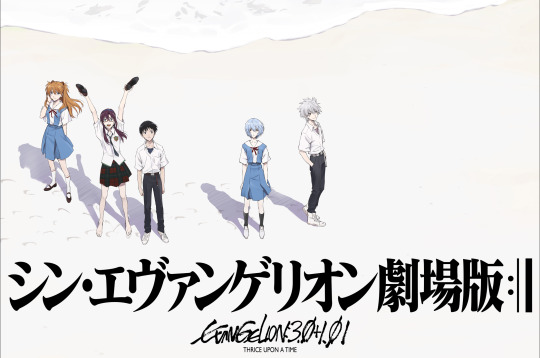
(I initially published this here a couple weeks ago.)
So last night it dawned on me that, after over two years of being relatively symptom-free, my depression snuck back up on me and has taken over. It’s still pretty mild in comparison to other times I’ve been stuck in the hole, but after 24 months (and more) of mostly being good to go, I can tell that it’s here for a hot minute again.
How do I know? Well, it might be the fact that I spent more time sleeping during my recent vacation from work than I did just about anything else, and how it’s suddenly really hard for me to stay awake during work hours. I don’t really have an appetite, and in fact nausea hits me frequently. I don’t really have any emotional reactions to things outside of tears, even when tears aren’t super appropriate to the situation (like watching someone play Outer Wilds for the first time). And I’ve been consuming a lot of apocalyptic media, to which the only response, emotional or otherwise, I can really muster is “dude same.”
For a long time I was huge into absurdist philosophy, because it felt to my depressed brain like just the right balance between straight up denying that things are bad (and thus we should fix them, or at least try to do so) and full-blown nihilism. This gives absurdism a lot of credit; mostly it’s just a loose set of spicy existentialist ideas and shit that sounds good on a sticker, like “The only way to deal with an unfree world is to become so absolutely free that your very existence is an act of rebellion.”
In the last couple years, while outside of my depressive state, I went back to Camus’ work and found a lot of almost full-on abusive shit in it. Not toward anyone specifically, but shit like “nobody and nothing will care if you’re gone, so live out of spite of them all” rubs me the wrong way in retrospect. The philosophy Camus puts out opens the door for living in a very self-destructive fashion; that in fact the good life is living without care for yourself or anyone/anything else. The way Camus describes and derides suicide especially is grim as fuck, and certainly I would never recommend The Myth of Sisyphus to anyone currently struggling with ideation. That “perfect balance” between denial and nihilism is really not that perfect at all, and in fact skews much more heavily towards the latter.
Neon Genesis Evangelion has been a big albatross around my neck in terms of the media products I’ve consumed in my life that I believe have influenced my depression hardcore. It sits in a similar conversational space to Camus’ work, in that it confronts nihilism and at once rejects and facilitates it. A lot of folks remark that Evangelion is pretty unique – or at least uncommon – in its accurate portrayal of depression, especially for mid-90s anime properties. The thing I notice always seems to be missing in these discussions is that along with that accurate portrayal comes a spot-on – to me, at least – depiction of what depression does to resist being treated. This is a disease that uses a person’s rational faculties to suggest that nobody else could possibly understand their pain, and therefore there’s no use in getting better or moving forward. Shinji Ikari is as self-centered as Hideaki Anno is as I am when it comes to confronting the truth: there are paths out of this hole, but nobody else can take that step out but us, and part of our illness is that refusal to do just that. Depression lies, it provides a cold comfort to the sufferer, that there is no existence other than the one where we are in pain and there is no way out, so pull the blanket up over our head and go back to sleep.
Watching Evangelion for the first time corresponded with the onset of one of the worst depressive spirals I’ve ever been in, and so, much like the time I got a stomach virus at the same time that I ate Arby’s curly fries, I kind of can’t associate Evangelion with anything else. No matter what else it might signify, no matter what other meaning there is to derive from it, for me Eva is the Bad Feeling Anime™. Which is why, naturally, I had to binge all four of the Evangelion theatrical releases upon the release of Evangelion 3.0+1.0 Thrice Upon A Time last month.
If Neon Genesis Evangelion and End of Evangelion are works produced by someone with untreated depression just fucking rawdogging existence, then the Eva movies are works produced by someone who has gone to therapy even just one fucking time. Whether that therapy is working or not is to be determined, but they have taken that step out of the hole and are able to believe that there is a possibility of living a depression-free life. The first 40 minutes or so of Evangelion 3.0+1.0 are perfect cinema to me. The world is destroyed but there is a way to bring it back. Restoration and existence is possible even when the surface of the planet might as well be the surface of the Moon. The only thing about this is, everyone has to be on board to help. Even though WILLE fired one of its special de-corefication devices into the ground to give the residents of Village 3 a chance at survival, the maintenance of this pocket ecosystem is actively their responsibility. There is no room or time for people who won’t actively contribute, won’t actively participate in making a better world from the ashes of the old.
There are a lot of essentialist claims and assumptions made by the film in this first act about how the body interacts with the social – the concept of disability itself just doesn’t seem to have made it into the ring of safety provided by Misato and the Wunder, which seems frankly wild to me, and women are almost singularly portrayed in traditionalist support roles while men are the doers and the fixers and the makers. I think it’s worth raising a skeptical eyebrow at this trad conservative “back to old ways” expression of the post-apocalypse wherever it comes up, just as it’s important to acknowledge where the movie pushes back on these themes, like when Toji (or possibly Kensuke) is telling Shinji that, despite all the hard work everyone is doing like farming and building, the village is far from self-sufficient and will likely always rely on provisions from the Wunder.
As idyllic as the setting is, it’s not the ideal. As Shinji emerges from his catatonia, Kensuke takes him around the village perimeter. It’s quiet, rural Japan as far as the eye can see, but everywhere there are contingencies; rationing means Kensuke can only catch one fish a week, all the entry points where flowing water comes into the radius of the de-corefication devices have to be checked for blockages because the water supply will run out. There is a looming possibility that the de-corefication machines could break or shut down at some point, and nobody knows what will happen when that happens. On the perimeter, lumbering, pilot-less and headless Eva units shuffle around; it is unknown whether they’re horrors endlessly biding their time or simply ghosts looking to reconnect to the ember of humanity on the other side of the wall. Survival is always an open question, and mutual aid is the expectation. Still: the apocalypse happened, and we’re still here. The question Village 3 answers is “what now?” We move on, we adapt.
Evangelion is still a work that does its level best to defy easy interpretation, but the modern version of the franchise has largely abandoned the nihilism that was at its core in the 90s version. It’s not just that Shinji no longer denies the world until the last possible second – it’s that he frequently actively reaches out and is frustrated by other people’s denials. He wants to connect, he wants to be social, but he’s also burdened with the idea that he’s only good to others if he’s useful, and he’s only useful if he pilots the Eva unit. This last movie separates him and what he is worth to others (and himself) from his agency in being an Eva pilot, finally. In doing so, he’s able to reconcile with nearly everyone in his life who he has harmed or who has hurt him, and create a world in which there is no Evangelion. While this ending is much more wishful thinking than one more grounded in the reality of the franchise – one that, say, focuses on the existence and possible flourishing of Village 3 and other settlements like it while keeping one eye on the precarious balancing act they’re all playing – it feels better than the ending of End of Eva, and even than the last two episodes of the original series.
I’m glad the nihilism in Evangelion is gone, for the most part. I’m glad that I didn’t spend roughly eight hours watching the Evamovies only to be met yet again with a message of “everything is pointless, fuck off and die.” Because I’ve been absorbing that sentiment a lot lately, from a lot of different sources, and it really just fuckin sucks to hear over and over again.
It is a truth we can’t easily ignore that the confluence of pandemic, climate change, authoritarian surge and capitalist decay has made shit miserable recently. But the spike in lamentations over the intractability of this mix of shit – the inevitability of our destruction, to put it in simpler terms – really is pissing me off. No one person is going to fix the world, that much is absolutely true, but if everyone just goes limp and decides to “123 not it” the apocalypse then everyone crying about how the world is fucked on Twitter will simply be adding to the opening bars of a self-fulfilling prophesy.
We can’t get in a mech to save the world but then, neither realistically could Shinji Ikari. What we can do looks a lot more like what’s being done in Village 3: people helping each other with limited resources wherever they can.
Last week, Hurricane Ida slammed into the Gulf Coast and churned there for hours – decimating Bayou communities in Louisiana and disrupting the supply chain extensively – before powering down and moving inland. Last night the powerful remnants of that storm tore through the Northeast, causing intense flooding. Areas not typically affected by hurricanes suddenly found themselves in a similar boat – pun not intended – to folks for whom hurricanes are simply a fact of life. There’s a once-in-a-millennium drought and heatwave ripping through the West Coast and hey – who can forget back in February when Oklahoma and Texas experienced -20 degree temperatures for several days in a row? All of this against the backdrop of a deadly and terrifying pandemic and worsening political climate. It’s genuinely scary! But there are things we can do.
First, if you’re in a weather disaster-prone area, get to know your local mutual aid organizations. Some of these groups might be official non-profits; one such group in the Louisiana area, for example, is Common Ground Relief. Check their social media accounts for updates on what to do and who needs help. If you’re not sure if there’s one in your area, check out groups like Mutual Aid Disaster Relief for that same information. Even if you’re not in a place that expects to see the immediate effects of climate change, you should still consider linking up with organizing groups in your area. Tenant unions, homeless organizations, safe injection sites and needle exchanges, immigrant rights groups, environmental activist orgs, reproductive health groups – all could use some help right now, in whatever capacity you might be able to provide it.
In none of these scenarios are we going to be the heroes of the story, and we shouldn’t view this kind of work in that way. But neither should we give into the nihilistic impulse to insist upon doing nothing, insist that inaction is the best course of action, and get back under the blankets for our final sleep. Kill that impulse in your head, and fuck, if you have to, simply just fucking wish for that better world. Then get out of bed and help make it happen.
24 notes
·
View notes
Text
Let's Talk About NatsuMikan: The Anime (pt. 1)
I could go on and on about these two and I think I will, just because I don’t often see people talk about the analysis behind them. The meta I have seen about them has included a perspective that equaled the anime and the manga and I don’t think that’s an accurate way of viewing their relationship.
The anime is a different species than the manga, something that frequently happens during the adaptation from page to screen. Since they’re so different, I’ll analyze them separately.
There's going to be many parts to this so I'll keep a table of contents right here so people can more easily navigate (though you can also read through the "let's talk about natsumikan: the anime" tag on my blog):
Anime Analysis
Part 1: Exposition & Episode 7
Part 2: Episodes 8, 9, 10, & 11
Part 3: Episodes 12, 13, 14, 15, 16, & 17
Part 4: Episodes 18 & 19
Part 5: Episodes 20, 21, & 22
Part 6: Episodes 23, 24, 25, & 26 & Conclusion
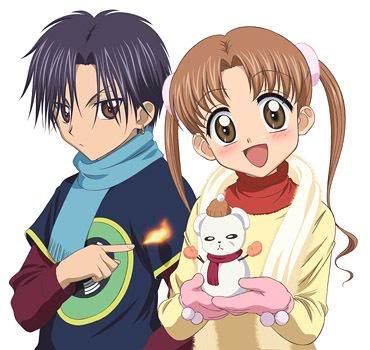
The anime makes changes, as anime adaptations often do. The most outstanding changes are appearance related, as Natsume now has brown eyes instead of red, in addition to other characters who have hue-shifted eyes and hair. But there are also story changes, and I’ll be focusing on the changes that occur, specifically in regards to Natsume and Mikan and their relationship.
For one, their relationship starts evolving much earlier in the anime. I think it’s pretty undeniable that in the anime, Natsume started liking Mikan at the end of the dodgeball game. That scene never happened in the manga, but in the anime, it’s a crucial step in making sure nothing seems too sudden or forced.
The anime is 26 episodes long. If Natsume only starts liking Mikan after she saves him during the Reo Arc, then we’re already halfway through the show when positive feelings between the two appear. On the other hand, the feelings develop more slowly in the manga because there’s more time to properly develop the relationship in a more drawn out way.
My analysis will start with the anime, because it’s shorter and easier to discuss.
Exposition
It’s impossible to say that the anime was completely loyal to the manga. It very frequently couldn’t be, because it needed to fill in time in episodes or give closure early before the manga even addressed it (Natsume’s backstory in the anime, for instance, is vaguely referred to and implies deviation from the manga).
The most obvious difference between the manga and the anime from the get-go is visual. Not only do they have differing art styles (I don’t dislike the anime style but Higuchi Tachibana’s art style is so distinct and unmistakable while the anime’s isn’t so unique), but the setting is also different.
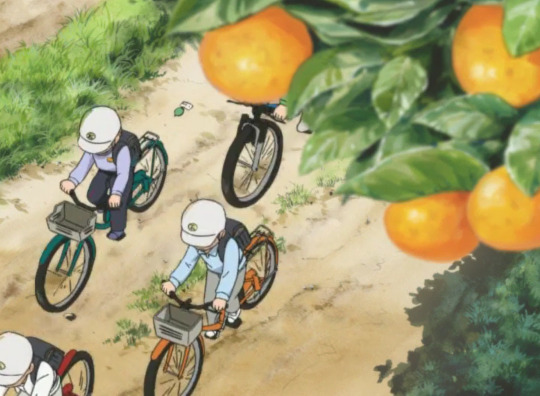
While the manga started in the depth of winter, the anime starts off in summer/fall. It always struck me as odd that while the first page of the manga has Mikan running after Hotaru in full winter-wear, the anime starts off warm and idyllic. You could almost think of that as a general warning for the difference between the anime and the manga. After all, while the anime has a reputation for being a cutesy and upbeat story about friendship and magical powers, the manga is much darker and discusses many morbid and depressing themes that can and WILL fuck you up. Warm vs. cold seems like an accurate difference, though I don’t think that was intentional.
We see way more of the village life in the anime, including Mikan’s efforts to keep the school from closing. This is a welcome change because Mikan’s passion to keep the school open is nothing compared to her friendship with Hotaru, and even after the school is saved, she runs away to see her friend, even if it means she goes to another school. The manga doesn’t imply that Mikan knew already about the school’s fate, and since she is always so preoccupied with Hotaru anyway, we don’t really get the impression that she cares very much. To Anime!Mikan, Hotaru is more important than saving the school, something she was so passionate about she rallied to get signatures. It’s an extra scene to prove just how much Hotaru matters to Mikan, and to show even more how selfless Hotaru was to go to Alice Academy, since she knew how much the school mattered to Mikan.

“Sign my petition to get a Gakuen Alice anime reboot!!!”
My boy Natsume is only introduced properly in the second episode, when we actually see his face and he speaks. His appearance is different from the manga’s too. I’m not sure if this was to appeal to a younger audience or what, but Natsume’s eyes are changed to brown instead of their iconic red, something that was always my biggest peeve about the anime adaptation. His hair is also somewhat purplish instead of entirely grey/black and, although this does bother me a lot less than the eyes, I wonder why they made this change when other characters have black hair. It might have been to differentiate him from Hotaru, another main character with black hair, though I’ve never had issue in the manga telling them apart.
His first interaction with Mikan is a lot more pleasant in the anime than in the manga, although that’s not really saying anything. Mikan’s skirt simply falls off and Natsume draws attention to it, rather than the unpleasant events that took place in the manga. This different event makes it a lot easier to support a relationship between the two of them right off the bat. They are still antagonistic but it’s not as terrible as it is in the manga. This makes it easier to establish romantic feelings earlier on, and might have been changed in order to achieve just that, or possibly also to appeal to a younger audience. Maybe both? Who knows.
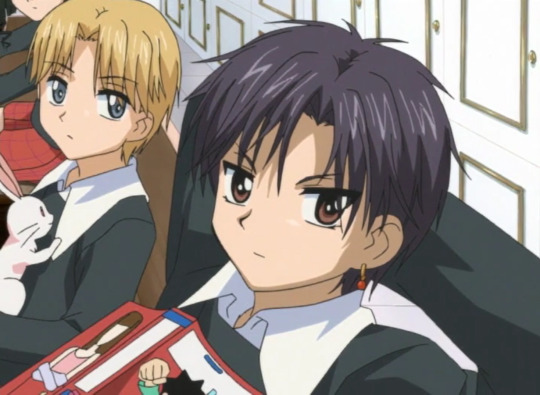
“You can’t sit with us!”
With Natsume presented the way he is in the anime, it’s easier to make the claim that he’s simply a good guy who acts the way he does to protect people. And it’s true! He is! But he is also so much more. In the manga, he’s a more complicated character. Although he is a good person, he still requires character development, which is something he does go through, and something I’ll talk about more in his meta analysis later.
Most of the events at the beginning of the anime parallel the events of the manga. Mikan goes to Alice Academy at the same time of year, Natsume shows up with an explosion, Mikan has to go through the Northern Woods, she discovers her powers in her fight with Natsume, etc. Some of the continuation from episode to episode is different than the transitions between chapter to chapter, there’s extra scenes inserted to fill up time, and some of the exposition seems strangely presented (in the anime, Mikan finds out more about the school when she finds Narumi and Iinchou waiting for her at a tea party, which is…. Super weird…), but all in all the information and events are mainly the same. The big differences start with the dodgeball episode.
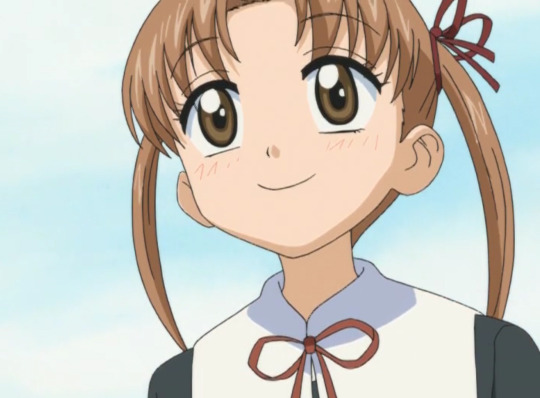
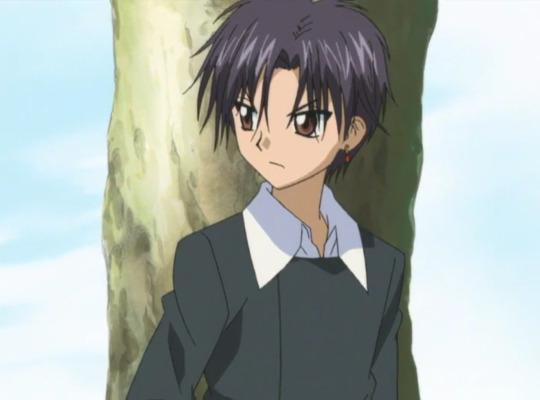
“Look how happy she is. Makes me wanna barf.”
Episode 7 vs. Chapter 9
I love the dodgeball episode. I feel like for the most part, the anime does deviation from the manga pretty well. With the last arc as an exception, I generally enjoy their changes and additions to the plot. The anime has to be different, has to progress at a different pace, has to introduce topics at different times. They have an episode to fill, and less time to build relationships. Natsume and Mikan are both different characters in the anime but it’s very subtle and has to happen due to the fact that the anime is shorter and seems more designed for younger audiences, in addition to wrapping up before the manga could explore more of the story.
Anyway, let’s talk about the dodgeball episode. AGAIN THIS DOES NOT HAPPEN IN THE MANGA THE SAME WAY so when discussing NatsuMikan as a concept, the anime events cannot be treated the same as the manga events. A lot of people maybe forget that the manga is very different than the anime when it comes to this episode. I see the two media conflated in plenty of fanfics, where seventeen year old NatsuMikan reflect on the dodgeball game from their youth that changed everything, and I get it because the anime version of the dodgeball game is cute! It's shippy! It's fun! But it doesn't happen in the manga the same way.
There's a similar trope with the sakura tree, which I can only remember from the anime, and yet it's such a fundamental aspect of NM fanfic it might as well have played a vital role in both anime and manga. Nothing wrong with any of this, of course. I'm just making it clear that my analysis will cover the two media as separate for the sake of a cohesive essay. Separating them in fanfic is far less important.
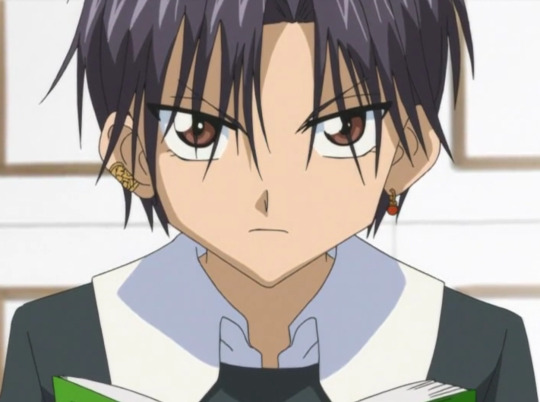
This look could probably kill someone. I’m surprised Mikan is still alive, TBH.
The chapter’s focus is Mikan starting to feel more at home in Class B, making friends with her once-hostile classmates, but the episode is more preoccupied with Natsume and Mikan’s perspectives on each other. While in the manga, the game ends with a tie and Mikan accidentally hits Hotaru in the face with the ball, the anime draws out the game to fill an episode and to introduce an evolution in the way Natsume sees Mikan. The first part of the anime episode is Mikan introducing her friends to her new senpai, Tsubasa. After she invites her friends, we see Natsume glowering at her and promptly ditching the next class, saying to Ruka that he can’t stand being in the same class as her. This addition to the plot already foreshadows that their relationship will change in some way by the end of the episode.
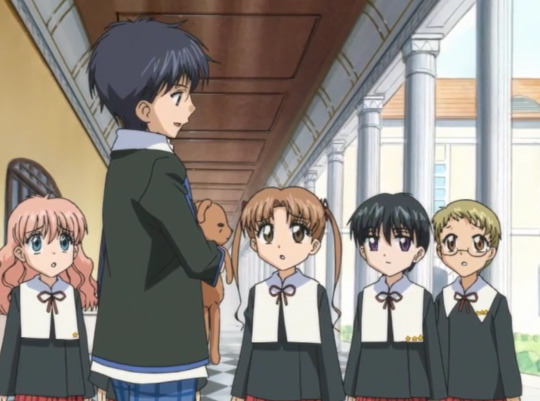
Tsubasa tells a frustrated Mikan that if she wants Natsume to be less unpleasant, he’d need to release some of his toxic energy. Thus, the sporty Mikan introduces the concept of dodgeball to the unwelcoming class. When they finally agree, Natsume gives one condition: that they play with the notorious Alice Ball, which is powered by the thrower’s alice (a detail absent from the manga). This Alice Ball is particularly terrifying with the threat of Natsume’s dangerous fire alice. Mikan also needs to get more people on her team, another aspect absent from the manga. While in the manga, Mikan only had her few friends on her team (including a wandering Ruka) and this ended up playing to her advantage, the anime has a humorous plot of Mikan tracking players down for her team, including a fake mustache she makes with her pigtails (she’s so cute, I love her), paying Hotaru to be on her team, and blackmailing Ruka to participate. This was mainly to fill time, but it makes the dodgeball game more important as well.
In the manga, we don’t see how the game ends, just that the teams tied and that everyone in class is having fun and bonding. In the anime, more emphasis is put on the “Mikan vs. Natsume” aspect, so a tie like the manga’s would be anticlimactic. Thus, the anime concludes the dodgeball game with Mikan and Natsume being the only kids left on the court, and Natsume not using his alice when he throws the Alice Ball. Even Hotaru leaving the game is something she does out of boredom instead of injury, further separating the other characters from the plot. It’s about Natsume and Mikan, and everyone else is mostly a side character. (Though Ruka also plays a vital role to this episode AND chapter, and it’s at this point that I think he started developing real feelings for Mikan as well. So when it comes to the anime, he and Natsume fall for Mikan around the same time, but in the manga, Ruka likes her first and the “he liked her first” argument for Natsume vanishes, though he never had that “advantage” to begin with.)

“Thank you!”
Natsume wins (something that shocked me at twelve years old) and is ready to walk away with his handy “tch” and all but Mikan thanks him for not using his alice and he goes off on her, demanding to know why she’s still smiling despite her loss. She says she’s happy that he had fun and was involved with the rest of class for once, and that in a way that means she wins. For Anime!Natsumikan, this is it. This is the turning point. “I just wanted you to be happy and have fun,” is what Mikan might as well be saying. “Really, this was all for you!” It’s sweet and it’s thoughtful and I don’t think Natsume ever imagined he’d be on the receiving end of her kindness, especially after all their beef. Manga!Mikan would probably not say these things to him, even if she meant them, for the sole reason that Mikan is stubborn and holds onto her pride, especially when it comes to her early relationship with Natsume, but Anime!Mikan is much more forgiving and much more willing to extend an olive branch, like in the dance episode. In any case, Natsume starts falling right then, and it’s obvious too, because he is pissed, and even more angry because he’s not even mad at her. He’s angry with himself for his change of opinion. This is the girl he was fully content to hate forever and yet here he was, starting to like her. Not ideal.
This scene, something so crucial to the development of Anime!Natsumikan, is completely absent from the manga. In the manga, Natsume still dislikes her by the end of the game although he does have fun.
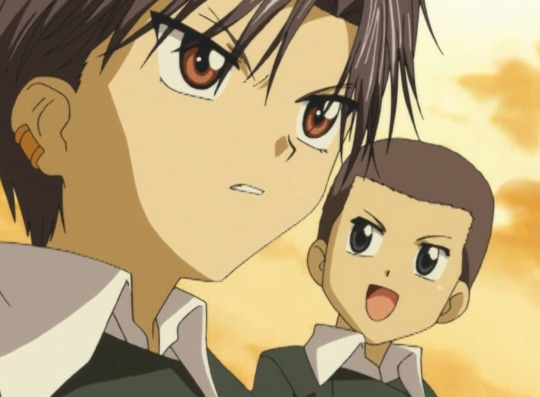
He's not angry, just disappointed. In himself.
I’m not going to say one is better when it comes to starting up NatsuMikan because they’re very different creatures and I actually thoroughly enjoy both.
Anyway, the NatsuMikan after episode 7 is almost the same as in the manga, but the events carry a different weight since we know Natsume likes Mikan now (even if he would never admit it).
Summary
I hope this first part was interesting, and that it introduced the idea of Anime!NatsuMikan as being a little different from the manga's version. Yes, it is more or less the same story, but with so many thematic and plot changes, they take a different form as well, in a perhaps more subtle way, kind of like a slightly canon divergent fanfic. Fanfic where Natsume starts liking Mikan a bit earlier on in the story.
Next Part ->
#gakuen alice#alice academy#natsumikan#hyuuga natsume#natsume hyuuga#sakura mikan#mikan sakura#meta#my meta#ga#meta analysis#mine#ga meta#ga meta: anime nm#let's talk about natsumikan: anime#im trying to create a system from one post so let's see how it goes#ive never posted media analysis like this but im very excited to bc ive always wanted to analyze these kids <3#unfortunately due to tumblrs image post limit of 10 i had to split this into MANY parts#im a visual person and i know others are too#if these images are not sufficient then i would rec maybe rewatching the eps after reading or maybe just skipping through the eps#u might some find some changes and themes of note as well to add and that would be super fun!#ga meta: nm#let's talk about natsumikan
49 notes
·
View notes
Text
Thoughts on Kyoru in Fruits Basket: The Final as a manga reader
(and bad metaphors about lava cake)
So with next week's impending shit storm of a Furuba episode next week, I've been doing some reflecting on our favorite Mutual Pining Idiots, Kyoru--and thinking about how the anime adaptation's choices in rearranging or removing content has impacted things, specifically with Se3E6.
And just to preface, I think the anime adaptation has been terrific overall. I also think loving something and critiquing something aren't mutually exclusive either. The goal of what I'm about to write is not to incite negativity, just to get some feelings out about my favorite pairing from my favorite manga series and provoke some deeper thought, I guess.
ALSO, I hope you don't mind metaphors--specifically ones about chocolate-raspberry lava cake, because that's what I've decided works best for explaining Kyoru. So FASTEN THOSE SEATBELTS PEOPLE
MANGA SPOILERS regarding previously omitted content as well as VAGUE ANIME SPOILERS that can be implied/inferred from the ending of Se3E7 under the cut.
I think one of the (many) reasons I find Kyoru to be such a satisfying ship is because of the slow-burn element. Come season 2 through the beach arc, their chemistry is palpable, natural, and growing stronger and stronger with each episode. When Kyo finally admits to himself that he's in love with Tohru in Se2E9, it feels like we've been rewarded with a chocolate lava cake topped with raspberry sauce--it's delicious, complex, and full of gooey and satisfying substance.
Now like many, I'm a sucker for the pining idiot trope--let alone the MUTUAL pining idiot trope--and we do get to see this through the end of season 2 as Tohru's feelings for Kyo become more apparent to everyone BUT her. It's like we're LOOKING at the chocolate-raspberry lava cake, so close that we can ALMOST touch it, but we as viewers aren't allowed to cut into it yet--which makes every little encounter between the two of them all the more exciting, because we wonder what's finally going to allow us to ravish this goddamn lava cake (sorry).
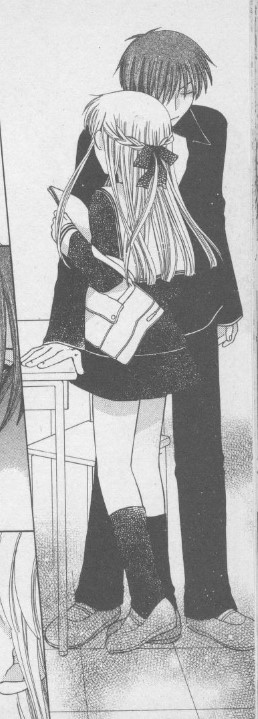
Which is why I realized I'm actually struggling more than I initially thought in the final season. As it's been widely speculated, discussed, and now officially confirmed, we're getting 13 episodes this season. And while like most everyone else, I'd be thrilled with two cours, I don't know the ins and outs of anime production, AND, while I'm bummed, I've accepted that it is what it is--and that it isn't the reason I'm writing this post.
Of course not every panel or fleeting moment can be adapted from the manga to the anime. There were small little cuts here and there over the course of the first two seasons, but nothing in my opinion that's really SO substantial that it drained the lava cake of its filling--maybe some of that raspberry topping, but generally, the good stuff is all there. (Though I do love this moment below from chapter 82, which was skipped over in Se2E19)
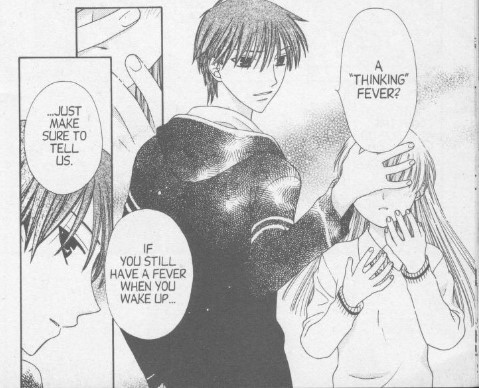
The final season has been different, though. As we know in the manga, the inner turmoil for Kyo--and Tohru to an extent--really starts escalating immediately after Cinderella-ish with Kyoko's backstory and Kyo's nightmare from chapters 90-93. I also understand that Cinderella-ish was Se2E23, and with only 2 episodes left in the season, it made sense from a directorial standpoint to end with the Kureno/Akito reveal versus Kyoko's backstory and Kyo realizing he needs to know his place.

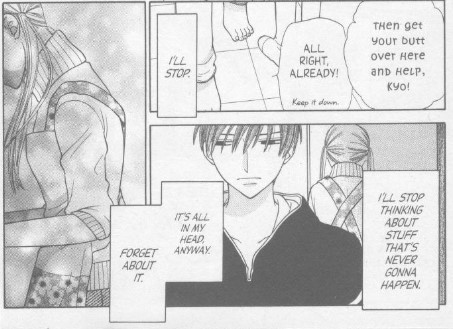
But without this context, it leaves moments like the flower scene from Se3E2 less impactful--like a lava cake made by someone who skimped on the filling. To an anime-only (and even as a manga reader), it's likely still a satisfying moment to watch: we know that Tohru clearly has a lot of inner turmoil following her conversation with Kureno. Kyo's turmoil following his nightmare, however--and overall, the sentiment of him thinking he needs to stay away from Tohru, yet still finding himself drawn to her above all odds--is deeply diminished.
Which leads me to the main reason (finally, sorry) that I wrote this post--Se3E6, or the episode when Tohru finally admits to herself AND to Rin that Kyo has taken the place of her mother as the most precious person to her.
In the manga, Se3E6 is made up of chapters 107, 108, 109, AND 114, spanning the end of volume 18 through the beginning of volume 20 of the TokyoPop mangas. Volume 19 in particular is one of my all time favorite mangas in the entire series for one clear reason: just as we've seen Kyo get to do in season 2, we finally get to see Tohru slowly own her feelings for Kyo, and MY GOD, is cutting into that lava cake and enjoying that delicious filling satisfying AF. The Mutual Pining Idiots are in full swing here, both dealing with inner turmoil but also being unable to stay away from one another either. In addition, they're dealing with normal teenage awkwardness too, which feels like a bonus topping (would nuts go well, do we think? LOL) to the Kyoru lava cake.
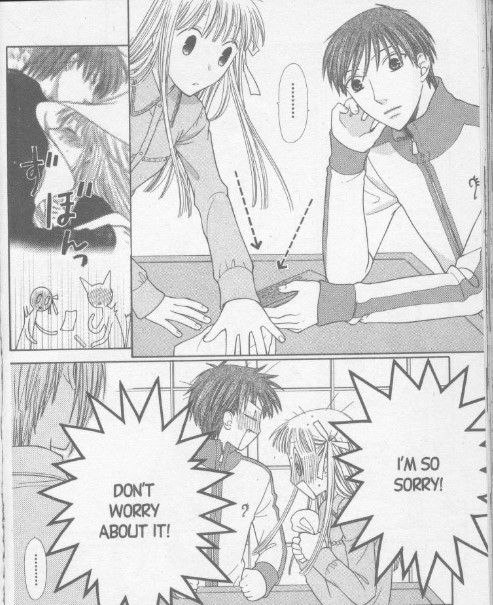
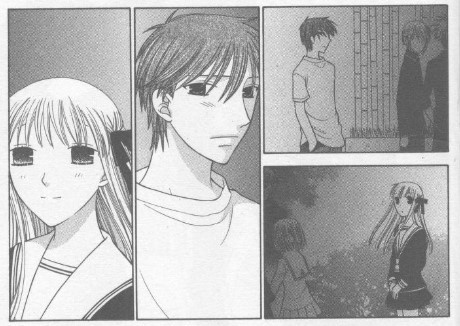
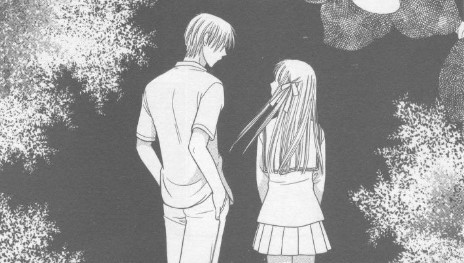
But between the producers adapting Momiji's arc prior to episode 6 AND the producers ending episode 6 with a 2-minute horror movie essentially--AND, lest we forget, none of the Kyoko backstory at this point--we lost essentially all of that satisfying filling.
And again, I understand, only 13 episodes and the producers are trying to make shit work and I do see why they made some of these changes in the overall big picture of things, but I wish it weren't at the expense of Tohru's character development and also for Kyoru, which had been so thoughtfully and delightfully well-developed in the first two seasons.
My biggest issue BY FAR with episode 6 is Tohru's confession to Rin happening before the sheets scene. The producers combined 109 and 114 for the second half of episode 6. In the manga, Tohru is able to openly admit that Kyo is the most important person to her BECAUSE of how he accepts her after she "opens the lid" to reveal the ugly feelings she's been harboring for years about her father. And in the manga, since we have the context of Kyoko's backstory and can see how she nearly committed suicide and left Tohru alone for days, it is gut-wrenching to finally hear Tohru confront and express her trauma in her own words.
The sheets scene is arguably my favorite scene in the entire series. The anime portrayed it beautifully. Jerry and Laura ripped my heart out with their performances. It was a deeply moving scene (even with all of the changes) and the romance and pining was there--but, I hate to admit it, the feeling of cutting into that delicious lava cake to reveal that even more satisfying filling was not.
And now, come the end of Se3E7, we're approaching the climax of the series that we've been salivating for for so long now, the result of all of this inner turmoil and secrets and deep, deep longing for one another--and it almost feels now like the cake was baked too quickly, in addition to being drained of much of its filling.
I was debating waiting to write this until next week after we see how Se3E8 goes, but my thoughts have been swirling about and this clown couldn’t help herself. I'd like to end this post on a hopeful and more forward-thinking note, though, if you've made it this far into my novel LOL.
There is definitely the potential to add a little more about Kyoko's backstory in next week's episode. I also expect that we'll hear more of Tohru's inner narrative and thoughts, which I’m really looking forward to. As several others have speculated as well, I predict that we'll be getting chapters 119-122 next week. Despite it being 4 chapters, everything should happen in sequence (versus with episode 6) and there's a lot of action, so I do feel like it won't feel rushed or disjointed. And while I could see them possibly ending with 121, 122 would be my preferred ending for many reasons (manga readers know where I'm going with this ;P) and I honestly see it fitting best there.
And regardless of what happens, I'm looking forward to eating whatever variety of lava cake is served to us next week.
And at the end of the day, we'll always have the manga, which will probably always be my favorite lava cake of all.
(and now I'm hungry for an actual lava cake)
#fruits basket#fruits basket spoilers#furuba#fruits basket manga#fruits basket anime#kyoru#tohru honda#kyo sohma#fruits basket the final#let them eat lava cake#sorry in advance#i love these mutually pining idiots so much#and i have a lot of feelings#kyoru clown hours#fruits basket meta#fruits basket analysis
46 notes
·
View notes
Text
..You already know what I’m gonna ramble on about, right? What’s got us manga readers feeling a little bit like this? Yeah.. I have words.
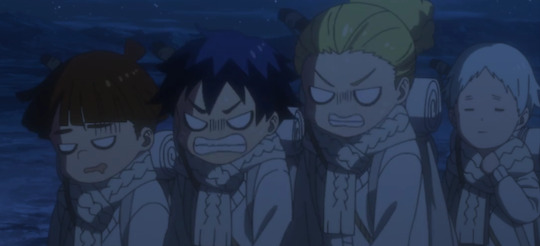
Yes, I’ll be chatting about possible future spoilers, so scroll past now if you wish, but if you frequently check the usual tpn tags anywhere today (or over the next few days), I’m sure you’ve become quite familiar with this guy already, so.. here we go.
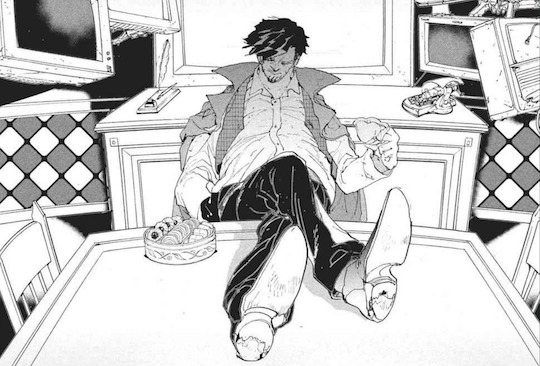
Let me start off by saying that I was beyond excited when we first found out we were getting a second season to this series. Having read the manga, I had high hopes that the anime would do so well, given the first couple arcs that follow the escape from Grace Field. From the very beginning, most of us figured it would touch upon the demon forest, the B06-32 shelter, Goldy Pond and quite possibly Cuvitidala. Of course, that was before we learned that this season had an episode count of 11 and would include some anime-only scenes, so we started to have some doubts. The new opening threw us through a loop as well, as a bunch of us speculated exactly how much this season was going to cover in terms of story and what chapter it would end off on. I was still a bit skeptical, but I put some belief in thinking we might be able to at least reach Goldy Pond. The more I thought about how many chapters this season could adapt, I remembered that Fire Force (another shonen series that has its fair share between action scenes alongside some calm, lighthearted ones) managed to fit 90 chapters into it’s first season, which was a total 24eps. I then thought it was possible for TPN’s second season to reach ch96, or maybe even ch101, since the total ep count for both s1&s2 would be 23. The upcoming arcs (GP especially) are undoubtedly more fast paced than the entire first season, which was very dialogue heavy, so naturally these action scenes would take up less time and require fewer episodes to show off. I won’t bash the second season for leaving certain scenes out and/or changing them (as the first season did this as well, albeit less noticeable), but the obvious ones come to mind. The full snakes of alvapinera scene? It was good to see the escapees overcome their first outside world obstacle on their own, sure, but overall it isn’t too important. Isabella’s scene at the gate with Grandma Sarah? Disappointing yes, but I figured they could always include that sometime later in a future episode.. at least, that’s what I’m hoping for. I can forgive the anime for those changes at the moment.. but after what episode 3 decided to pull? Oh no.. now they’ve done it!
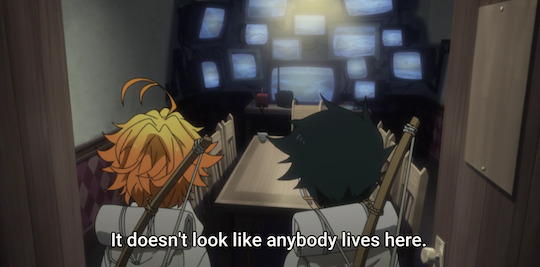
I’m sorry.. but who exactly thought this change was a good idea? The anime-onlys must think we’re going crazy right now but c’mon, CLOVERWORKS! Are y’all for real right now?? Yeah they never even announced his voice actor beforehand like they did with Sonju & Mujika before their debut, but damn it! Also, don’t take my word for this, as I only just heard and not completely sure about the credibility, but apparently after ep4, the rest of the season will be like.. original? And I’m not sure how to feel about that if it’s true? I’ll take whatever content we get because yes, I love this series to pieces and want it to last as long as possible, but after waiting almost a full two years to see these wonderful kids animated again.. I just wanna continue on with the story we all know and love, darn it. I know Shirai is overlooking this season and giving his approval or whatever too, so that’s comforting at least.. but still, I just wish we knew this a little sooner, rather than have us find out this way by cutting out one of the most anticipated characters of this entire series! (for the time being anyways.)
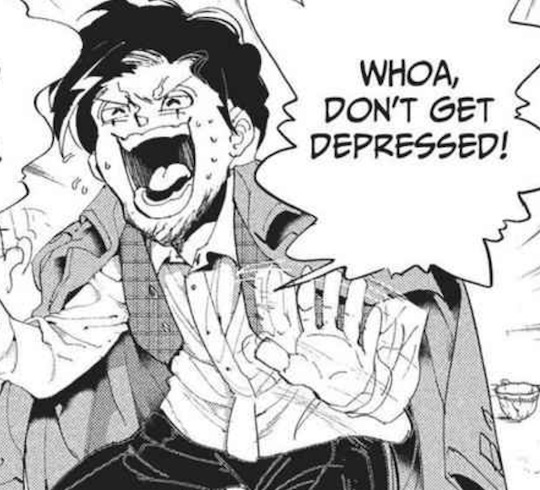
Yeah we didn’t see him this episode, but he’s around.. somewhere. No one else is around to write on the walls like that, let alone get into the shelter without a pen. (i also noticed it doesn’t say “poachers” anywhere, so that’s a bit odd too..)
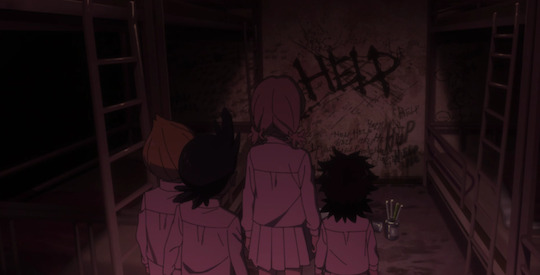
I just hope that whenever our man does show up, whether it be this season or not, that it follows the manga because his introduction is fantastic and his interactions with the kids are so amusing. Honestly, he’s too important to cut out entirely. The same goes for the Goldy Pond arc, which I saw some others worried about too. It’s at Goldy Pond (ch73) where Emma and another man, who we’re also anxious to meet, both find out about how to cross over to the human world via the four premium farms, the supporters, and project lambda7214.
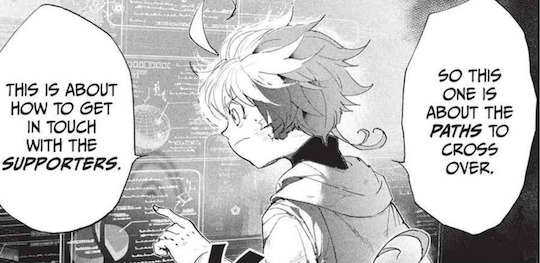
I also saw some people concerned about Mujika’s goodbye to Emma this episode and how upon giving her the necklace, our demon friend didn’t hint at The Seven Walls at all, which is why Goldy Pond suddenly becomes that more important for us to see because it’s also there where the place is mentioned, not only by the many secret files from the pen’s cap, but from Minvera himself (ch72).
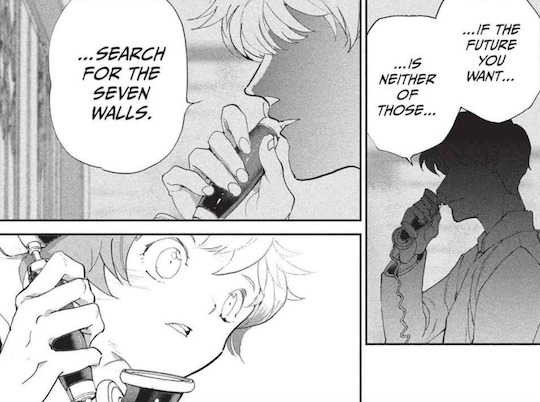
Come on now, Goldy Pond arc also does wonder for Emma’s character and appearance. It’s here where we see just how serious she is about changing the world and saving everyone she possibly can. Even if she has to fight crazy, killing poachers, she’ll do it. (also one of those poachers becomes very helpful much later in the story, so there, yet another reason we can’t skip this arc.) Though this all gets me wondering if GP will still get blown up on Jan 29th.. oh season two, you raise so many questions.
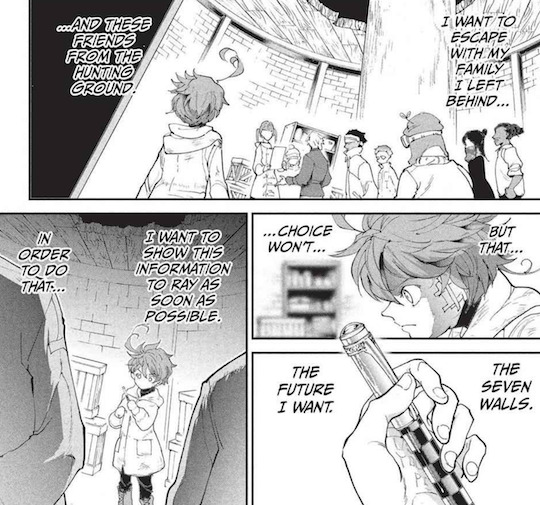
Now, could this season completely change some of those scenes even further? Of course, they’ve already done so with other bits of information. Ray figuring out the demon’s weakness in ch62 during the trip to Goldy Pond? Sonju already explained it.
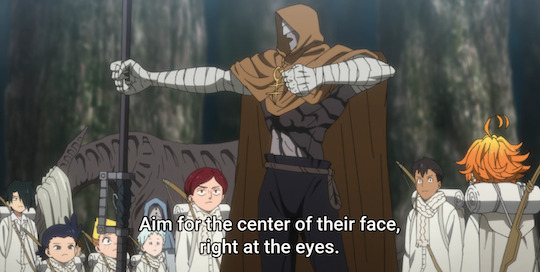
The letter from Minvera that we learn about in ch56 which was originally hidden in one of the manuscripts from the shelter’s archive room? Conveniently pinned to the wall in plain sight!
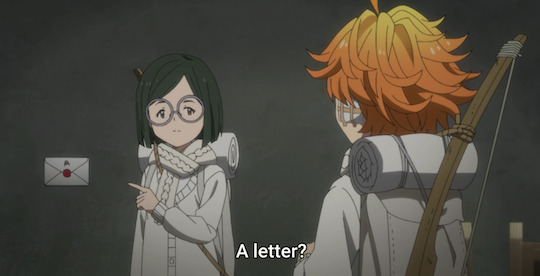
I didn’t notice this when I first watched the episode but remembered just now while skimming through the manga yet again, but the episode didn’t have Gilda list off the coordinates to Goldy Pond that Minerva noted in his letter.
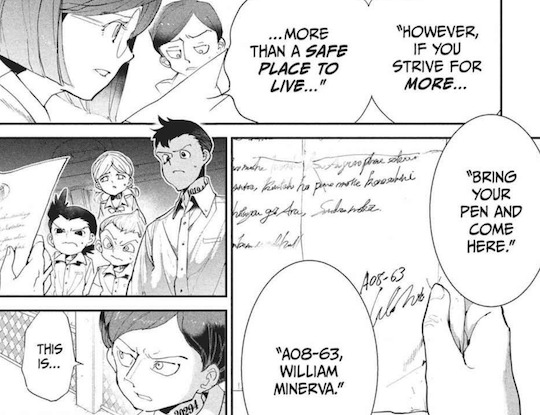
So how will the duo find their way there? Well, you already know.. and since GP is such an important arc, that’s another reason I believe our beloved man will show up.... eventually.
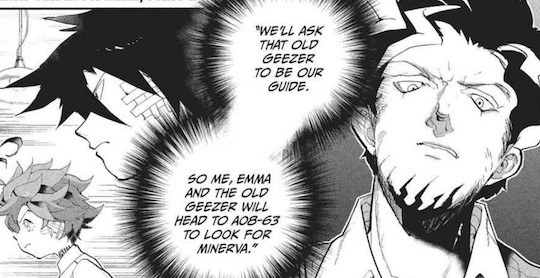
Going back to the changes now, but it’s Dominic who reveals the secret room behind the piano instead of our favorite father figure.

Although this room, which is supposed to be a full stocked armory, is completely bare..
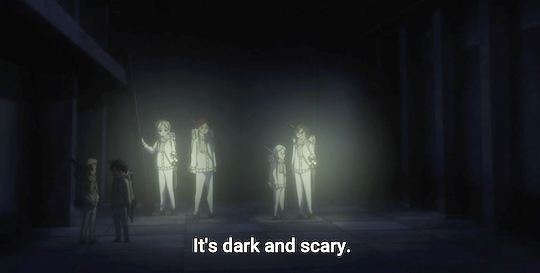
Like.. hello? Where are all the weapons?? Are they gonna make these kids go out and raid a bunch of the other fake/dummy shelters for weapons or something? which.. actually sounds interesting and fun now that I think about it.

I also noticed that the conversation about the mass-production farms Sonju mentioned back in ch50 was also cut, but I can see the anime easily adapting it into a future episode somewhere, since said farms are mentioned again in ch56, courtesy of the shelter’s many books.
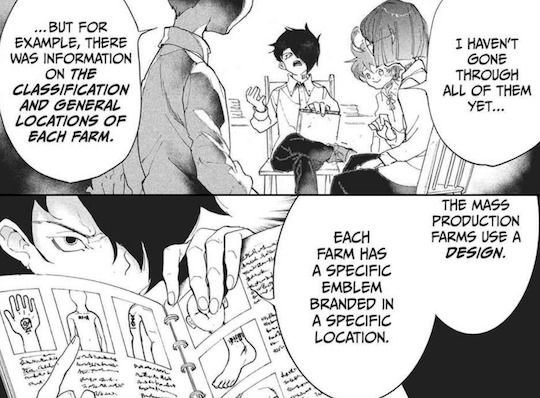
For now it just seems.. I don’t know, a bit easier? like I recently spoke about how Ray had to figure out how the pen worked in terms of coordinates and yet the anime just had the pen show a simple map, then Sonju flat out told them how to efficiently kill a demon, and the phone that allows them to contact the supporters? Oh, they found that instantly, whereas geezer had no idea such a room even existed in those 13 years he lived at the shelter..
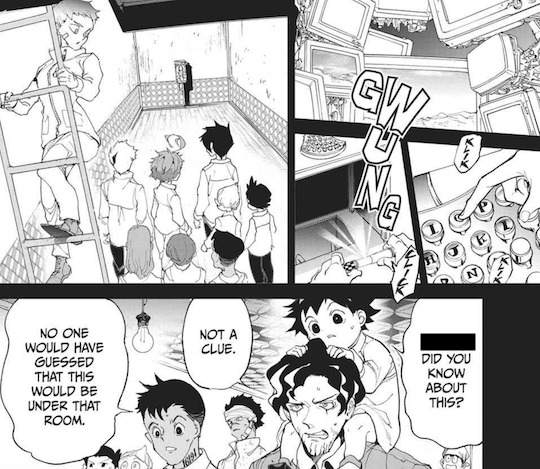
Have I spoke too much by now? Probably. None of the changes bother me too much, aside from the geezer’s obvious absence, but I’m still looking forward to the rest of this season, as I’m sure it’ll give more spotlight to some of the other kids aside from Emma and Ray. Season one just did so well with sticking to the manga that I guess we all got caught way off guard, huh?
70 notes
·
View notes
Text
What Sweet Tooth Changes From the Comic
https://ift.tt/3g1fJx0
This article contains spoilers for Sweet Tooth, both the TV series and the comic.
Sweet Tooth, the live-action adaptation of Jeff Lemire’s post-apocalyptic comic, has now arrived on Netflix and it’s a hit! Or at least that’s what producer Robert Downey Jr. ‘s overwhelmingly prevalent promoted tweet claims. I can recite “#SweetTooth is now certified fresh with a perfect 100% critics score. So incredibly proud of the whole @sweettooth team and can���t wait for you to see ‘the show of the summer.’ All episodes are now streaming on Netflix!” more readily than my own name at this point.
Still, it’s easy to see why Sweet Tooth found an audience on Netflix. The story of a gentle deer-boy hybrid named Gus and his quest to find his mother in a virus-ravaged world puts a refreshingly optimistic face on a well-worn post-apocalypse genre. Actor Christian Convery is a real find as Gus a.k.a. Sweet Tooth and the series eight episodes feel like an ‘80s Amblin Entertainment homage done right.
Sweet Tooth is so inherently sweet that audiences might not realize just how much it deviates from its comic inspiration. Lemire’s comic miniseries, published from 2009 through 2013 by DC’s Vertigo imprint, has many fans, including some big pop culture names. Actor Michael Sheen wrote the foreword for the series first collected trade paperback. TV writer Damon Lindelof (Watchmen, Lost) conducted an interview with Lemire for the end of the final book. The comic is also decidedly less sweet than the TV show it inspired.
Arriving in an era before apocalypse fatigue fully set in for pop culture, Sweet Tooth really leans into the Mad Max side of its “Bambi Meets Mad Max” elevator pitch. The book is quite dark and unflinching. That Netflix and series creator Jim Mickle decided to go in a brighter direction for the show is an interesting commentary on entertainment’s priorities at the moment. But what if Sweet Tooth the TV series decided to hew closer to its source material? Read on to see how the comic and the show differ.
Tone
It cannot be overstated just how much darker the Sweet Tooth comic is than the TV series. The show acknowledges that the post-apocalyptic world after “The Sick” would feature some inherent violence. In fact, the whole plot of the show involves hunters trying to kidnap a child and deliver him to the military to be ground up into medicine essentially. That’s obviously dark. But the show still does its best to avoid as much onscreen violence as possible.
When the Big Man or another character rescues Gus from hunters, he does so in a largely bloodless fashion. Even when Big Man takes a bear trap to a poacher’s head, audiences are spared the grisly sights and sounds of it. Readers of the Sweet Tooth comic, however, are spared nothing. The pages of Lemire’s work are positively drenched in blood. Midway through the story, Gus is even forced to beat a fellow hybrid’s brains in with a brick. He says he feels bad about it, but not that bad.
The comic also delves into the realm of sexual violence as many post-apocalyptic stories have felt compelled to do before. Early on in the proceedings Big Man and Gus come across a town where a family captures women and forces them into prostitution. When Big Man rescues two women, they become permanent fixtures of their party. These characters, Lucy and Becky, do not appear in the TV show (though one character does borrow her name from one).
If all the violence didn’t already make it apparent, the Sweet Tooth comic is particularly misanthropic. Nearly all of the human characters in the comic are monsters. Even Gus’s beloved Big Man Jepperd is useful because he’s a monster. Jepperd never loses sight of what makes him useful in this world, which is killing. He only becomes a hero when he applies that skill to those who deserve it. Throughout the series run, the comic continually intimates that perhaps planet Earth would be better off without all these humans anyway.
Characters
Befitting the comic’s darker tone, the characters of Sweet Tooth are also quite a bit darker. While Convery’s depiction of Gus in the show is absolutely pitch perfect for a young Spielbergian hero, the Gus of the comic isn’t quite as self-assured or sophisticated. The education that Gus received from his “pubba” wasn’t necessarily top notch stuff so his vernacular is filled with more slang and abbreviations. He comes across as a true Nebraskan country boy.
Meanwhile, Tommy Jepperds a.k.a Big Man (Nonso Anozie) gets an even bigger makeover for the show. Lemire describes the Jepperds of the comic as being inspired by the concept of an aging Frank Castle. There is absolutely no warmth in the comic’s Big Man. Instead of being an ex-football player, he’s an ex hockey player…and a pretty terrible one at that, only useful as his team’s “enforcer”. Anozie’s Jepperds is quite a bit more personable and open. Though he intends to sell Gus to the Last Men, he never goes through with it. In the comic, Jepperds does exactly that before changing his mind and rescuing the boy.
The pig-girl hybrid Wendy (Naledi Murray) exists in the comic but her mother Aimee (Dania Ramirez) does not. Instead Gus meets Wendy at the Last Men facility after Jepperds sells him off. He meets Wendy’s little buddy Bobby there too.
Gus’s “pubba” is a janitor at a medical facility in both the comic and the show, but as played by Will Forte in the show, he’s a lot more tender and smooth. The show Pubba is the perfect father to young Gus, open, communicative, and knowledgeable. In the comic, however, the character has lost some of his mental faculties in isolation. He is a God-fearing man who entertains and writes down his apocalyptic visions. Gus loves him and he loves Gus but he’s also not operating at full capacity. Also not operating at full capacity is Dr. Adityah Singh (Adeel Akhtar), who becomes inspired by Pubba’s writings and believes that Gus is a new god.
cnx.cmd.push(function() { cnx({ playerId: "106e33c0-3911-473c-b599-b1426db57530", }).render("0270c398a82f44f49c23c16122516796"); });
The Animal Army is quite different in the comic. Instead of being a ragtag gang of Neverland-style kids, it’s a disturbing cult of adults in animal masks, led by a deranged man who has five dog-hybrid children. Becky a.k.a Bear (Stefania LaVie Owen) is an invention for the show but she does take her name from a comic character.
General Abbott though? He’s pretty much that villainous in both iterations of the story. Screw that guy.
Story
Though Sweet Tooth’s first season begins and ends in a similar spot to the first “Book” (12 issues) of the comic, the path it takes to get there is wildly different.
Read more
TV
Why Sweet Tooth’s Ending is Ultimately Hopeful
By Nicole Hill
Scenes at Aimee’s Preserve and at Dr. Singh’s Stepford-ian community are invented entirely for the show. The Preserve is mentioned in the comic, but it’s never confirmed to exist (and likely does not, given the comic’s relentlessly dark tone). The first time Gus and readers meet Wendy and Dr. Singh is at the Last Men facility where Gus finds himself in the final episode of the season. Also new to the TV series are Gus and Big Man’s side quest through an outdoor sporting goods store, and the entire Animal Army’s arc.
In the comic, Gus, Big Man, and company’s journey stretches from Nebraska to Alaska (hey, that rhymes!). The show elects to shorten that a bit by having Gus venture from Wyoming to Colorado. In addition to introducing new stories, the show also abandons some comic stories entirely, likely in pursuit of its cheerier tone.
Netflix has not announced Sweet Tooth season 2 yet. Based on the show’s apparent success, however, future seasons seem likely. When they arrive, they will undoubtedly have many more changes to make from the source material to ensure an appropriately sweet viewing experience.
Sweet Tooth is available to stream on Netflix now.
The post What Sweet Tooth Changes From the Comic appeared first on Den of Geek.
from Den of Geek https://ift.tt/34XlXru
20 notes
·
View notes
Text
Shadow Into Light (Lena Retrospective): Magica’s Shadow War

Hello all you happy people! And welcome back to Shadow Into Light, my look at the life and times of Lena Sabrewing. We’re in the end stretch, just two more installments after this: one covering what may be my favorite episode, and the other covering Lena’s season 3 appearances, as unlike Seasons 1 and 2 she shows up outside her own episodes fairly often and most of those apperances touch on how far she’s come or her life in some way shape or form, so I really can’t skip over them.
But before we can get to the end of Lena’s arc, we have to once again go back where she came from. Previously I covered the one and only apperance of Minima DeSpell, a character Lena took some inspiration from. But Lena is a combination of Minima and another Ducktales 87 character but this time one from the show itself, in the same episode we meet Magica no less. Given how much frank loved the original, it’s not a huge shock one of the most vital and intresting new characters from the reboot was partially taken from an episode he probably watched 80 dozen times. So how does the original shadow stack up with her rebooted counterpart? Is the episode any good? And should I watch invincible. The answers to this question are under the cut!

To answer your question on invincible.. Yeah you should. It’s gorgeously animated, has a MASSIVELY talented and diverse cast, and perfectly adapts the original source: Adding in great new stuff and shuffling things around to work better for the pacing of a tv show. And after loosing The Tick to Amazon’s greasy clutches, not to mention Danger and Eggs and Alpha House before that with no formal cancelation so they coudln’t move elsewhere, i’m not taking any chances despite the odds being far more in invincibles favor. Check it out, just mind that it has a shocking amount of gore, if you like superheroes. Or even if you don’t, it’s pretty much guaranteed to have someone you like doing a voice.
Enough shilling for an unrelated show though, let’s get to this one. We open with our introduction to the De Spells. Magica is hovering over a caludron with a diabolical new plan to steal Scrooge’s #1 dime. Why?

Or at least I didn’t. I knew why she wanted the dime itself mind you: The Dime has picked up some powerful emotoinal energy from being around Scrooge all his life as he built his fortune, made his way square and fought Teddy Roosevelt. All that good stuff. So naturally if used in a spell, that spell is going to be massively powerful. I just didn’t know what the spell was.. and now I do.. i’mmm underwhelmed. She wants it to gain the midas touch, i.e. the ablility to turn things she touches into gain, using the dime as a power source for an amulet.
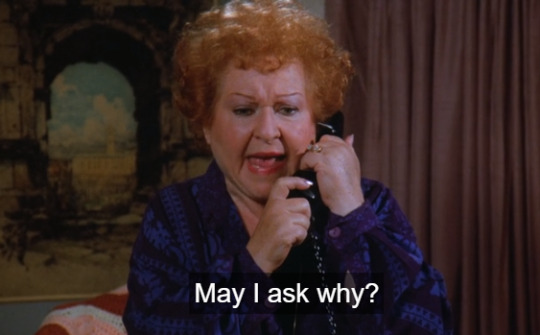
Magica, via her potions and spells has the powers to do just about ANYTHING. And her goal is.. make some things into gold. She has a giant volcano laier, whatever resources she needs to go after Scrooge, and in this series at least can buy a haunted house on a whim. She HAS money.. why would she need this. And second... the midas touch is a bad thing. You cant’ USE or enjoy anything because it turns to gold> That was the whole fucking point of the myth. If it removes the weakness than fine.. but again it seems like a lot of effort for something with a short range and heavy possible drawbacks. I tfits her personalty to a point but even then she has better spells. I’m going more with it simply allowing her to supercharge.. is it more simplisti? yes. Does it make more sense than “Give myself a power that can easily be turned back on me by just making me touch myself “ yes, yes it is.
Meanwhile the boys dick around playing Candid Camera with a new camera Gyro gave them that is no more advanced than your average instant camera. You’d expect this new invention to come in handy against Shadow Magica. And you’d be right. You’d expect the boys to at least suggest hte idea before the climax. You’d be wrong. This big is just.. irrtating. It’s just the boys being dicks to everyone by taking embarssing photos and really adds nothing to the episode of any remote subtsnace.
Conversley Magica continues to be the highlight, as her check in with airport security gets her through as she has no fruit. Ah the days before they throughly scanned us and most tsa jokes were about shoving hands up someone’s ass. Seriously.. why. .why is that a common joke. I’ve never had it done but unless you fully consent to it it’s not fun to get your hand up there but it was an oddly common gag for a long time.I.. really don’t get it.
She arrives in america and buys a haunted house, to the realtor’s shock but eh it’s a sale. The black mold just makes it more sinister. Magica sicks Shadow Magica on the bin, with an elaborate plan but giving the Shadow one hour to do it because otherwise it will disapate.. given it dosen’t it’s likely more Magica trying to keep her double in line, having ran into trouble earlier with shadow her trying to steal the wallet of what I can only assume to be gus goose. So he was on vacation tha’ts where he was.. from what I don’t know he dosen’t actually do work and the house of mouse hadn’t been established yet. Maybe Gramma Duck just gives him vacation days.
So the shadow ALMOST gets away with the dime.. but accidnetly knocks over a pedestal and warns Scrooge and the Boys, who manage to chase her off. Scrooge having only one magical nemisis in his Rogues gallery, that we know of, knows who did this and prepares for an attack. Magica.. berates her doppleganger and while she considers a spell to power her up, decides against it since what would stop the Shadow from betraying her. The shadow agrees.. and locks Magica and Poe in a closet and makes the potion herself, taking on a creepy new form and planning to raise an ARMY of shadows.
And here... is where the split between Lena and The Shadow is very deefinite. While Frank and Matt kept the shadow and Magica really not getting along and only working together out of necisity on both ends.. the shadow here REALLY is just magica. Just as evil and ambitious, and just as sneaky. The only diffrence between the two is the shadow’s logical weaknesses of being a shadow, i.e. light weakens her and she can only hide in darkness or other shadows, and how they were born. Shadow magica is every bit as evil and devious as the main one. I do get why she stuck in Frank’s brain though: the idea is simple but ingenious, someone’s shadow gaining sentience, and the cool tricks you get with that as she ducks and darts between shadows. It’s really good stuff and frank expertly expanded it with lena, making her basically humanoid duck other than where she came from, but still using the neat tricks with the shadow itself for Magica’s imprisoned form and later the shadow army. It’s a good example of taking a really good idea.. and making it even better, by having said shadow being deal with not being considered a person by the person who spawned her and really ramping up the idea of a shadow army, which Shadow Magica eventually summons, from about ten guys to an entire cities worth. The shadows also you know come from people instead of just thin air but semantics. Point is it’s a very good concept and done really well esepcially for the 87 cartoon, and while Frank’s take was unique and very well done, it dosen’t make the original any less good.
And it’s shown off with a cool sequence of the shadow infiltrating the manor and nearly getting to the dime with Scrooge having rigged the place to all hell with lights as a percaution. It nearly wins but louie uses a shadow puppet to scare it off. While Scrooge ponders this latest attack Poe shows up, and offers Magica’s help.. but Scrooge rightly dosen’t want it, as he can’t trust her and only agrees when the boys bring up the power bill from keeping the lights on.
Now getting Magica on board is not an idea: The shadow’s a threat to both of them and they need each other. The next part though.. is a bit stupid and drags the episode down a bit. Magica asks for the dime to beat the thing. Now Scrooge wisely is hesitant to do so.. but everyone else treats it like his usual greedy antics. Thing is.. it’s not. We don’t, at least in this adaptation, know what Magica wants with the thing or the full extent of what she can do with it or if she even actually needs it. While getting her help is one thing, giving her the DIME well...] ]’ii98[[
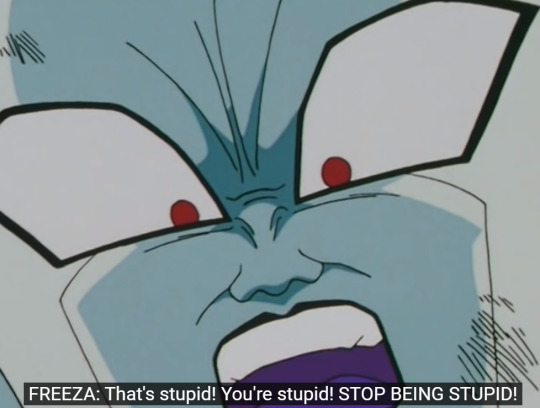
Why would you give someone you KNOW wants to use the dime to conquer the world or whatever the thing she wants? It’d be like handing Thanos the Infnity Gauntlet to take out Galactus. Yes, your handling a big problem.. but your burning the world to do it. It’s just so frustratlingly dumb. There’s a good idea in there, Scrooge being forced to lend Magica the dime, but it’s buried under Mt. Contrivance!
So Scrooge reluctantly goes along with operation:seemed like a good idea at the time, and cleverly puts the dime in an empty stadium. Unfortuantley the lights malfunction and Shadow Magica summons MORE Shadows, and now has an army. Launchpad ends up being helpful, also he’s in this episode for some reason, by pointing out shadows need light.. and thus another logical weakness as killing the rest of the lights renders them weak and allows our heroes to lure them to the vault where Magica waits> Magica is able to weaken it with the spell.. but even with that the Shadow SITLL is too powerful..

Enter the cameras, which take out Shadow Magica, saving the day. We get a lesson about trusting Gyro’s gadgets for.. some reason and Scrooge stops Magica from fleeing with the dime with a shadow puppet. Smiles and cheese sandwitches all around
Final Thoughts on Magica’s Shadow War: This episode is not half bad. While the Dime Thing is mindblowingly moronic, and the camera thing is REALLY poorly set up, I have not had a more apt use for that Scott Pilgrim Panel yet, the sheer concept and June Foray’s sheer force of personality as both magica’s makes it work. It’s a fun, engaging adventure and a solid chonk of classic ducktales. As for how it relates to Lena it does so decently. But with this our side trips are at an end. Only two episodes left! And then onward to the lilo and stitch crossover arc! Yes really. Kev wanted a buffer before getting to the Season 2 arcs and I loved tha tshow as a kid so why the fuck not.
Next Time on Shadow Into Light: Lena gets welcomed to prime time bitch as Magica pulls a freddy and stalks her through her dreams. Sadly she did indeed forgot about the power glove. Can the rest of the kids break away from dreams of high school musicals, becoming a garfild, giant legs and libraries long enough to save Lena? Will we have a very queer in the best way possible musical number about Lena and Webby’s anniversary? Will I talk about Huelet? In order, yes, yes, and probably. But join me anyways won’t you.
If you liked this reviews, subscribe for more. If you have a ducktales episode from seasons 1 and 2 of the reboot or the whole of the 87 series, drop me a line through my ask box, my dm’s or my discord, technicolormuk#6550. Reviews or only 5 bucks an episode for tv. Other prices on the blog. Or if you can’t spare that much, join my patreon. Even a buck or two a month helps reach my stretch goals and the more of those I hit the more disney content you get a month. The current one is only 5 bucks away. I’m 15 and if I hit 20 that guarantees a darkwing duck review every month AND reviews of the super ducktales mini series. But if you can’t that’s cool and I get it times are hard, it’s why I have to shill so hard. But until the next rainbow, it’s been a pleasure.
#ducktales#ducktales 87#magica's shadow war#lena sabrewing#shadow into light#magica de spell#poe de spell#scrooge mcduck#huey duck#louie duck#dewey duck#bentina beakley#launchpad mcquack#the disney afternoon#disney +#disney plus
27 notes
·
View notes
Text
Yashahime Translation: Animedia September 2020 Issue
Please do not repost this translation without my consent! This includes screenshots of any type and amount. If you wish to share this translation, simply link to this post.
For more information regarding the use of my translations, click here.
This is an old article that was published back in August of 2020, before Yashahime began airing so please keep that in mind as you read this. I never translated this article until now so this is not a reprint or anything like that.
The Key to Successful Feudal Survival Lies Within the Birth of the Two?!
As “the story of Inuyasha and Sesshōmaru’s daughters”, “Hanyō no Yashahime” has been a hot topic. Sesshōmaru’s daughters, Towa and Setsuna, were raised separately in the modern and feudal eras and Inuyasha’s daughter, Moroha, spends all her time slaying demons in the feudal era. When the time traveling tunnel opens, Towa and Setsuna reunite and Moroha also comes to the modern era. What sort of fate awaits the half-demon princesses who have been drawn together without knowing their parents? While the three of them have been put under harsh circumstances, this time we look into the survival techniques of those girls. In addition, the existences of Inuyasha, Kagome, and Sesshōmaru in the main story is of interest but why is the story relating to them being depicted once again in the first place? We asked producer Naka regarding the details.
Character Bios
Setsuna 14 years old. She is Sesshōmaru’s daughter and Towa’s younger twin sister, but she does not have any memories from when she was little. She makes a living slaying demons under Kohaku and has a personality that is calm and unphased.
Higurashi Towa 14-year-old middle schooler. She is actually Sesshōmaru’s daughter. 10 years ago, she time traveled to the modern era via the Tree of Ages’ tunnel. She is good at martial arts and tends to get into fights.
Moroha 14 years old. While she is Inuyasha and Kagome’s daughter, she does not know them. A bounty hunter who sells the heads and fangs of the demons she slays, her alias is “The Monster Killing Moroha”.
Our Survival Master, Producer Naka Toshikazu
The “Inuyasha World” once again depicted by the gathering of the main staff!
— Please tell us the details on what prompted the creation of a new work that is like a sequel to the Inuyasha series.
The production team of “Inuyasha” continued to meet periodically even after the anime, “Inuyasha The Final Act” ended. It all started a couple years ago during one of those meetings when producer Suwa Michihiko-san said, “I want to do “Inuyasha” on TV again”. Although it seems there were some who thought that continuing a story that had already been cleanly concluded as well as having someone besides Takahashi Rumiko-sensei creating it was a little… Then with scriptwriter Sumisawa Katsuyuki-san getting involved in the conversation, it turned into if the story is about the second generation, depending on the content, it might work. That’s how the story of Sesshōmaru’s daughter being the protagonist was born.
— What sort of back and forth did you have with the original creator of “Inuyasha”, Takahashi Rumiko-sensei?
After it was decided that “Sesshōmaru’s daughter would be the protagonist of the story”, we had scriptwriter Sumisawa-san create the character set-up and plot. However, we had Takahashi Rumiko-sensei create the character bases and the designs of the 3 main characters and do scenario checks. But fundamentally, the onsite (staff) generally handle the episode scenarios and character designs.
— Are there any points where Takahashi-sensei’s ideas were used in the main characters’ designs?
We did the designs once we got to the current character setups after receiving a lot of ideas. To say which ideas were sensei’s is difficult to answer. However, she was extremely conscious of Towa being a girl when she designed her.
— I see that there are those who worked on the Inuyasha series gathered among the main staff of this work.
Director Satō Teruo and character designer Hishinuma Yoshihito continued to work for us at our first studio, even after “Inuyasha The Final Act” ended. Even before the work took on its current shape, we had a conversation that “We plan to create a continuation of the “Inuyasha World” so we’ll be in your care when that time comes” and they just naturally took part. Scriptwriter Sumisawa-san has been participating since the start of the project.
— While the expectation of Towa, Setsuna, and Moroha’s efforts rises, please tell us some highlights.
To have you like the “Yashahimes” Towa, Setsuna, and Moroha. In addition, be able to feel the atmosphere of the “Inuyasha” world. We keep these two points in mind during creation, so it would be great if you could enjoy both the new and the nostalgic.
Survival Question for Producer Naka!!
Q. Since the work is a dangerous world of going between the feudal and modern eras, which character do you think has the most proficient survival techniques and the most adaptable?
A. Setsuna. Setsuna and Moroha grew up in a harsh environment since childhood so both of them have a high survival ability. However, with the skills and knowledge she obtained from the demon slayers as well as her calm personality, I think Setsuna can adapt to many situations while demonstrating a sense of stability.
Q. It seems that Towa, Setsuna, and Moroha have the strength to battle demons but to make it through the survival (world) that is the feudal era, what other abilities are necessary?
A. I would say economic strength. Setsuna is a demon slayer and Moroha makes a living as a bounty hunter. I think the reason why both of them acquired a trade at 14 is because they need financial strength.
Q. If Towa, Setsuna, and Moroha lived together in a survival environment, who do you think would be best at taking care of others?
A. Moroha. Moroha is bright, cheerful, and friendly so I think she would be the nosiest one among the 3.
Setsuna Style Survival Technique
Can make calm, collected decisions, no matter the circumstance
Setsuna ruthlessly slays evil demons with a cool expression. It is thought the figure of her not being phased by anything is something she inherited from Sesshōmaru. It is possible that the survival skill of always staying calm is so that she can live on her own.
Towa Style Survival Technique
When getting mixed up with hoodlums, she uses martial arts (her forte) to pull through
Towa chastises hoodlums, becomes the target of revenge, and fights again, thus continuously getting into trouble and repeatedly transferring schools. Even in daily life survival, she does not forget the honest martial arts spirit. That is Towa’s true strength.
Moroha Style Survival Technique
Slay demons and collect the bounty
What Moroha is after when slaying demons is the head, fangs, and other body parts that can be obtained from them. Selling those that have a bounty is what provisions her living (translator’s note: aka how she puts bread on the table). One truly feels traces of Inuyasha in her form.
What is the True Identity of the Father Everyone Has Been Wondering About…?!
Moroha’s father, Inuyasha (voice: Yamaguchi Kappei) A half-demon with a demon father and a human mother. He was on a journey to collect the shards of the Shikon Jewel with Kagome, (a girl) who possessed the powers of a priestess. Sesshōmaru’s younger half-brother (different mothers).
Towa and Setsuna’s father, Sesshōmaru (voice: Narita Ken) Inuyasha’s older brother and a full-fledged demon with a demon mother. There were times when he fought both against and alongside Inuyasha. He traveled with a young human girl, Rin.
Illustration Description
Towa is overjoyed at reuniting with her younger sister who has been in the corner of her memory. While Setsuna, who has no memories, is constantly bewildered, she’s a little embarrassed from Towa taking her hand…?
25 notes
·
View notes
Note
When MVA/MLA Arc gets animated, what will you be looking forward to the most? What (canon-compliant) additions and/or changed do you want or think Bones should make, if any?
There’s--a lot. Does that surprise anyone? There’s a lot.
o I have been foaming at the mouth for voice actor announcements for almost a year now, particularly for Trumpet, Geten and RD. Trumpet’s superpower is literally his voice! I mean, nothing about that statement requires that voice be particularly entrancing, but it certainly seems like it should be, right?? Geten is a boku-type in the manga, but that was literally the only hint foreshadowing his pretty boy face through 21 solid chapters of Pure Feral Gremlin. Everyone was shocked by Geten’s face reveal! How do you maintain that surprise value with an actual voice actor in the mix? Do you not even try? Do you play up the disparity--in which direction? I can’t wait to see what they do. And Re-Destro! Re-Destro requires so much range! From his peppy, silly businessman persona, to the urbane commander, from the overeager yes-man to the raving zealot--who on earth do you get to believably cover all that ground? I can’t even begin to guess, but I am living in anticipation of that article going up on ANN or the official Twitter sources.
o I’m also much looking forward to getting official coloring on Trumpet and Geten. Skeptic seems pretty straightforward--black, black, more black--and RD and Curious, we have color art for, but I wonder if Trumpet will also be all black clothes, to go with that dignified politician image of his, or if he’ll get some color to pep him up a little. What color are those tinted shades of his? His eyes? The wicked-cool Sevens Loud? I assume Geten is all wintery shades, but it’ll be great to confirm which ones. I mean, we all assume he’s white-haired to better annoy Dabi with family parallels, but what if he turns out to be platinum blond? And are his eyes blue? Gray? White? What color is that awful parka? Also, Re-Destro’s stress powers. Having been writing them as black since at least August--Rorschach test blots are generally black, after all, and they’re the clear inspiration--I would much like it if the anime would have my back on this. They made Destro’s mask a dark cinnamon brown, though, so I’m prepared to be unpleasantly surprised in this matter.
o Predictable MLA adaptational choices aside, I’m also eager/anxious about how they’ll handle Spinner’s narration. What I really hope is that they actually straight-up hand him ALL the narration duties--not just the stuff he dictates directly in the manga, but also e.g. the name and quirk explanation material that Present Mic normally gets, or the previews that are always handled by Deku. The opening and closing sequences are another big structural thing, of course--based on the flashed snippets of Hawks and Endeavor in both our current and the previous OP, I’m expecting we’ll see at least a bit of something referencing the upcoming internship arc (which I expect to close out the season), but I hope the villains just walk away with the closing entirely. I want my slice of life villainy ED, dangit.
o Another thing I’m eager/anxious about would be Kotarou, and the Shimura flashback generally. There’s a brittle edge of to Kotarou that I really love, and I hope he manages to keep it in the anime, despite the anime being generally not so great at moments that I would describe as “delicate.” For example, I’d like it if he doesn’t get a super deep voice, and if they could manage to keep his pretty face, and capture how deeply bitter and tired he looks in the scene where he’s reading the letter Nana left him. Also, I hope they keep the little montage bits and, crucially, the changes of clothes the family goes through. We see Tenko in no less than five, possibly as many as seven, different T-shirts through the course of that flashback. It seems like a small thing, but it’s one of the factors that makes me skeptical that AFO gave Tenko Decay, when so many days clearly go by between the opening with the man at the door and the tragic end. It’d be nice not to see too much resurgence on that just because the anime can’t be bothered to come up with more than one outfit for the Shimuras.
I have enough issues with the anime’s usual adaptation choices that I’m trying not to get my hopes up too high on the actual content of the episodes. The staff is diverting too much of its major talent to the movies (BAH) these days for me to expect the whole season to look all that great, and it’s never been particularly creative or daring outside of its climactic sakuga-heavy fight scenes anyway. I’ve also long had a bone to pick with its scoring decisions, and am already eyeballing the climax of the RD/Shigaraki fight and imagining the minor-keyed terrifying dirge I fear the anime will play there, at the moment that Re-Destro (and, shortly afterward, Spinner) are supposed to be experiencing something akin to religious awakenings. There’s also the issue of the violence and gore--judging by how the anime handled the scene where Shigaraki and Compress maim Overhaul, I have some severe reservations about how much blood they’ll be allowed to get away with, particularly in the scene where the League brutally decimates that CRC group and, of course, Shigaraki’s backstory. I’m looking at MVA to serve as a preview for how all the same issues will be addressed in the War Arc.
That bit of pessimism aside, as to what I’m hoping they’ll add or change? Well, off the top of my head.....
o I would love to get a full episode devoted to the time the League spends fighting Machia. Not that first tussle, but the six grueling weeks in the mountains. There’s so much you could add there for character building and atmosphere that Hori didn’t so much as montage through. Where was their food coming from? How’d they pick out places to pitch camp? How much access to news from outside did they have, and how frequently? What were the circumstances in which Gigantomachia “told them himself” about his great sense of smell?? Stuff like that! I don’t think we’re at all likely to get this--honestly, the series of late has had enough of a problem with trimming bits and pieces that I’m as worried about what they might cut as I am hyped about things they might add--but the one thing that gives me some hope is the training camp arc. Specifically, the moment 1-A first gets to the Pussycats’ forest, they get jumped by earth golems, a fight that the manga off-panels entirely, but the anime spends a modest amount of time on, giving the kids a little bit of time to show off their moves and such. I’d love to get something equivalent for the League.
o On a similar note, I wouldn’t turn it down if they fleshed out some of those running street fights a bit. One obvious thing comes to mind: there’s a weird jump in the manga between Skeptic and a horde of his golems being all but on top of Twice at the beginning of 233 and then that fight just--doesn’t happen. There’s no mention of it at all. I think the suggestion is that either Machia’s appearance or the tower going down interrupted it--Skeptic breaks off from his fight the same way Geten and Trumpet do theirs, shifting focus to protecting Re-Destro--but it’d be nice to see the anime touch on it.
o It’d be nice to get a bit of expansion on the nature of the bullying Spinner endured. We’re told he was, but was it limited to verbal? Did he get beaten up a lot? Was there an online element? Deku’s our only other reference point for “bullied kid,” and whatever one might think about the story’s development of Bakugou’s mentality, it’s been made clear in retrospect that there was a lot more too that than just the matter of Deku’s quirklessness. I’d love to know how Spinner’s bullying looked in comparison (not least because of some of the theories about Spinner and Deku needing to come to some kind of accord to free Shigaraki from AFO).
o Make the Villa (both here and during the War Arc) look more realistic. By which I mean, I know Horikoshi is capable of drawing interesting and lived-in interior spaces--he has an entire chapter dedicated to it in the 1-A dorm room contest, after all--but he normally doesn’t bother much with it. At UA, it’s not too distracting, because we know good and well that that whole building is probably maintained by Cementoss anyway. Ditto places like Tartarus (intentionally, dehumanizingly barren) or the League’s post-Kamino hideouts (abandoned homes and industrial spaces). But the Villa? For heaven’s sake, it’s called a mountain villa. It has a clear reception desk on the ground floor; it’s obviously some sort of high-end hotel, if not an outright resort or rentable retreat lodge. Speaking as someone who’s worked in one, places like that don’t look as fuckin’ bare as the rooms we see there always seem to. For fanfic purposes, I’m happy to go on telling myself that e.g. the pool and the bar and the restaurant(s) and the gym are in the building Cementoss doesn’t tear in half, but it’d be nice if the anime could class the whole place up a little, maybe put some real furniture and decor in the rooms that are in use. (Yes, I know this is a ridiculous nitpick.)
o This is less a change and more a correction, but for fuck’s sake, BONES, give us white-haired Shigaraki. The climax of Deika is a solid time for it, given that it’s obvious in the manga that Shigaraki’s hair gets paler in Deika--you can see it in the way Horikoshi inks it (which is to say, the way he stops inking it)! I think if we ever get white-haired Shigaraki in the anime, a somewhat better time as far as narrative justification goes would be when Shigaraki gets out of the tube in the War Arc; you could easily justify it as a side-effect of the surgery. Still, I’d rather see it here. I want white-haired Shigaraki, gleaming and brilliant through the scattering ash in that crater, a veritable angel of sacred destruction. Honestly, more than anything, the crater sequence is the one I hope I love. It’s probably my favorite single moment in the entire manga, as Shigaraki wins over Re-Destro, Spinner and Gigantomachia in the same moment, and finally comes into his own. If they can at least nail that, I’ll consider myself pretty satisfied.
#stillness-answers#my villain academia#meta liberation army#boku no hero academia#bnha#hopes and dreams
15 notes
·
View notes
Text
The League of Villains are not the easiest people to root for. But censoring how violent they are, and how violent their opponents are, is not making it easier to see them as compelling antiheroes, at least not as easy as it was in the manga.
I again am wondering what happened in the production of this season--and whether other studios should take over some arcs of My Hero Academia.
“Revival Party,” My Hero Academia Episode 109 (Season 5, Episode 21)
An adaptation of Chapters 218, 224, 225, 226, 227, and 228 of the manga, by Kohei Horikoshi, translated by Caleb Cook with lettering by John Hunt and available from Viz.
My Hero Academia is available to stream on Crunchyroll and Funimation.
Spoilers up to My Hero Academia Chapter 326.
Before I get started, I should put a disclaimer that has been largely unspoken in these reviews. I tend to capitalize “Hero” and “Villain” when writing about the literal jobs or legal titles given to characters in My Hero Academia. If I just meant what role a character has in the story, I would have lowercased it. For example, the League of Villains is made up of Villains, but in this arc, while they are not our heroes, they are definitely our antiheroes.
And that detail has made it even more difficult to write about an episode like this.
I delayed writing this review largely due to scheduling and time availability. Seriously, look again at the top of the post and how many chapters this episode is trying to cram in. Even with just a few pages out of each chapter, that’s a lot of content. I’m not asking for a One Piece pace, but there is something to be said about how helpful the two-chapters-adapted-per-episode guideline was in previous MHA seasons.
And those chapters also contained a lot of content for me to compare back and forth to really figure out whether the anime was censoring much from the manga. (Answer: the anime censored a lot, but even those chapters from the manga were not as bloody and gory as I remembered.)
All of that being said, while time availability has been a challenge this week, that’s not the only reason I delayed getting to this episode. I can’t lie that, given the difficult content ahead, this isn’t exactly fun viewing or entertaining writing. This is digging into the dark side of this series and what it says about larger societal concerns with mental health, corporate power, abusive families, gore, and what amounts to one-person natural disasters like Shigaraki. Not everything in the superhero genre is sunshine and lollipops. But I anticipated how much of a marked departure this arc was going to be in terms of violence and tone, given how far along I’m at in the manga: as this series is going, it’s going to keep being pretty grim until Izuku returns to UA. Engaging in that story is difficult, compared to how comparatively lighter the series has been up to now. And I’m even including All For One’s revelation at Kamino that he effectively kidnapped the grandson of the woman he killed--and now, looking at that grandson in this arc, we’re reaching the logical conclusion to that darkness.
It has been past time to really delve into Shigaraki’s origin story, and like what we learn about Toga in this episode, I feel underwhelmed. We’ll get to more about Shigaraki in the next episodes, but this one felt like it could have stood a little more room to breathe. If the opening could have been moved to the previous episode, if this one could have started with Toga facing Curious, and if the episode had ended with Toga passing out, I think all of that may have given Studio BONES more time to offer something more visually impressive than what we got, as well as add back content in the manga but cut from the anime, such as actually showing Re-Destro, Skeptic, and Trumpet mourning Curious’s death.
(And did the anime change Skeptic’s dialogue from the manga to make it sound like, in this anime, Skeptic doesn’t know Toga just murdered Curious? The man has surveillance everywhere and didn’t see that? But I’ll have a lot more to say about how incompetent the MLA comes off, and how that makes any victory by the League less exciting.)
As I said before, if you’re going to show how systematic change is needed and can be achieved, having one set of villains fight another set of villains isn’t the worst approach.
But it is also an approach that can obscure just what you’re supposed to be fighting against.
The Meta Liberation Army is shown to have its hands in various corporations, political groups, and mass media, all of which is not without its own set of unfortunate implications.
I hate the word “elite” used as an insult. by itself, the word should just mean the best of the best, yet, rather than “elitist” being a fair criticism against a system that elevates only the best at the expense of what is good for as many people as possible, the word instead usually is used to attack people who already have power but are in no way the best of the best. Seriously, how do you look at a post-2016 United States--or a post-W, or a post-Reagan, United States--and ever think these clowns at the top of the Republican Party are the best of anything aside from being the least pungent of all choices of horse shit that party puts in front of you? What I’m getting at is, lambasting the elites only works if the elites were the worst thing to fear. An argument can be made that the elites, when they are apathetic, are the problem; but when people with power, but who lack the skill to handle it expertly, abuse that power, those aren’t elites, they’re not the best of the best--they just suck at what they do, and their incompetence causes problems for everyone.
With all of that in mind, I can’t help but wonder if the MLA in MHA are elites or just incompetents.
When My Hero Academia presents the elite as the villains, that can be bothersome. Showing that the most influential and most successful in electronics, business, politics, and mass media also happen to run a cabal from the shadows is bothersome, as it reinforces distrust in such systems not based on evidence but on the worst suspicions we have about that power. It’s not like this is original to this series: fear of the shadowy forces working in the background have been pivotal to superhero stories, whether Cadmus in Justice League Unlimited or, showing that even the heroes can be bad guys, the Illuminati in Marvel Comics.
Mitigating the more problematic aspects of this portrayal is the fun Horikoshi obviously took with some details: you wouldn’t name Curious’s villainous mass media company after your own publisher without some biting-the-hand humor involved to poke fun at your own role in a power structure. You know, kind of like how I can’t pass up remarking how the villainous group in this arc shares its initial with the most notable literature and languages academic organizations in North America--even as I get the sense that academics won’t get my joke, given the continued separation between serious academic work and serious fan/pop culture work. Or the fact that a lot of academics have little to no sense of humor--myself not excluded.
But going back to “the heroes being bad guys,” this approach with the elite being the villains is not unwarranted. We’ve seen the best of the best in the forms of Pro Heroes and realizing they are not without their problems: All Might’s role as a symbol allowing others to not rise to the occasion when they expect him to save the day, and Endeavor is a domestic abuser. So it makes sense, after sticking with the Pro Heroes for so long, that we finally get a group of Villains that are really a legitimate threat, having operated in the shadows for so long until the time is right. That should be a monumental moment for this series. We reverse it to finally show Villains who are at the top of their game.
And the Villains at the top of their game are going to get their asses handed to them so quickly by a ragtag group of misfits. How disappointing.
It’s not unexpected: history and previous pop culture are full of the ragtag underdogs beating out those in power. But as with previous victories for the League, it feels less like they were really that much better than the MLA. Rather, it’s more so that the plot gave them last-minute power-ups (including revealing this late in the game Shigaraki’s back story to show us, no, he always had this power, this isn’t an author’s ass-pull, you’re imagining things). And it’s more so that the MLA is just foolish. It’s one thing to have Re-Destro be so overconfident to challenge the League in this manner; it’s another to not have better contingencies. Shigaraki brings a kaiju, Re-Destro couldn’t sacrifice a few bucks for a Trypticon? But perhaps I’m not being fair: I complain about All For One being too overly prepared, now I’m complaining about Re-Destro being so under-prepared.
It doesn’t help that I couldn’t figure out Skeptic’s plan. Is he cloning Re-Destro with Twice’s ability so that they can have a figurehead? That would make sense. Or is he cloning Re-Destro with Twice’s ability to keep Re-Destro always present? Because, if so, he does know that Twice’s Quirk cancels when he’s knocked out or dead, right? I mean, if he doesn’t, that helps clarify that the MLA is not as all-knowing as they seem--which makes Re-Destro’s goal to do what the government has not and take down the League all the more comical given how overwhelmed Re-Destro ends up being by these sidelined outcasts.
With the MLA, it’s too bad that, even when we get to see villains supposed at the top of their game, their portrayal is hampered by the series itself, whether by introducing the MLA so late in the run that their successes are going to immediately become pathetic (worsened by how the anime has handled adapting the manga this season) or by making the League losers for so long that, while we get behind them as the underdog in this fight, it can feel like too little, too late.
The League of Villains, when not benefiting from All For One’s resources and Shigaraki’s planning, have just been victims of luck: any victory has had its cost, given what happened to Magne, and there hasn’t been an obvious strategy on Shigaraki’s part for bringing in admittedly powerful members like Toga, Twice, and Dabi but who have their own flaws that get in the way of what the League could accomplish. Even the victory against the Shie Hassaikai and the Pro Heroes had more to do with how brutal the Villains were willing to be, less than some brilliant strategy, regardless Shigaraki’s game metaphors thrown back in the face of the now armless Overhaul. This arc was supposed to be a good opportunity to show some of the League unlocking their potential and showing how audience members like me underestimate them at our peril. And I don’t get that sense of peril, when Toga’s victory is thanks to a last-minute power-up, one that was already vague in the manga--“awakening” now being something Quirks can somehow do--and almost completely unstated in the anime--largely cut in this episode, along with Curious’s world-building information about “Quirk counseling” and other government assistance that I wanted to hear about in this series but keep having sidelined for under-animated action.
And speaking of under-animated action, I was really expecting something more brutal in this Toga story, and it wasn’t there. I should be grateful: I did say I was hesitant to watch this gory an episode. I went back and forth between this episode and the manga chapters to try to figure out what was being censored and what wasn’t. The wiki helped, but I also think the black and white colors of the manga somehow made how brutal all the damage was look more impressive. This anime needed to up what was already in the manga--and instead, Toga gets blown up a few times yet looks comparatively still together. I know Curious’s followers had their blood made explosive, so no wonder they died in such shiny (and censored) fashion, but Toga gets out of this largely in-tact and her outfit relatively fine? Don’t get me wrong, I’m grateful this didn’t turn into cheap fanservice, but I expected something more graphic. Everything, even the blood, just looked so cartoony that I didn’t feel the dread I expected. I really don’t want to sound desensitized to violence, because I’m not: I just think BONES made a stylistic choice for how to mitigate the intensity of this kind of violence so not to turn away a younger audience, and instead they are not letting this show grow with its audience and show that, no, something this gruesome has to be made to look gruesome.
At least the choice for how to show Curious and others dying was visually creative. The manga showed the bodies largely in shadows as they hit the asphalt: effective, but not that creative. Here, the anime shows a spray of blood in the air--creative, although without the well-done parallels that could have happened (see Spy x Family making a spray of blood look like simultaneous fireworks happening nearby).
Too bad Curious is gone. I’m a sucker for criticisms of mass media, and yet another woman character gets frigid. Now we’re stuck with the other MLA members having largely little to no personality. Seriously, I’ve seen people do better with Skeptic by amping up his social awkwardness so that there is at least something there other than only “over-confident tech CEO.”
While the personalities of the other MLA members are less interesting, the acting and casting made significant improvements, thanks to better material to work with. Takako Honda and Tara Sands knocked it out of the park as Curious, bringing all the right beats of how a media mogul would talk, especially as on-air talent. I had initially had some concerns with the voice chosen for Ben Diskin’s performance as Skeptic, but it’s working for me now--very guttural, befitting his grunge Gorillaz-inspired design and theming. It was odd how the voice direction was trying to make the usually reserved Dabi more fiery. But it makes sense for the choice to have Geten sound so icey cold--especially as, of course, Endeavor’s son Dabi would freak out this much when hearing about another prodigy having their Quirk overworked since childhood and the stress that’s put them under. And Sonny Strait was given such a good dialogue with Giran that was really effective, bringing a lot more civility to this uncivil person.
But that still leads to the other problems with this episode: so much content has been cut from the manga that, as other writers online have said, we’re kind of thrown into the story just assuming we’re to know who Re-Destro is and what his deal is. Summarizing all of that with a narration by Izuku--and I’ll circle back to why having him having any role in this episode is just lazy--is far less effective than how the manga handled it. I can’t do justice to summarizing the problems when other writers online have done better, so, I’ll just say, go read the manga instead: Horikoshi’s allusion to The Killing Joke is excellent visual shorthand for understanding what Re-Destro is all about, imbuing him with sad clown details that complicate his overall thuggishness and make you question whether that’s all he is or whether he really does love these people. Given what we will learn soon about Geten, I do think he loves these people, all the more reason why cutting the scene where he is crying over Curious’s death a significant flaw for what is supposed to be contained in this episode. As I said, this episode should have centered on Curious and Toga--not a cliffhanger about Twice, not foreshadowing Shigaraki’s origin story and power-up, not starting the Geten and Dabi fight, just that woman and that girl, that’s it.
I don’t think the animation was up to the task. Today on Twitter, a few clips have popped up from the Re-Destro and Shigaraki fight, and while I see potential that is pulling from similar animation techniques used in the Sports Festival--the arc that, so far, has been the arc to beat for this series in terms of quality animation--it still felt like it lacked impact.
This episode as well has the same problem. I understand that an episode will pick the scenes to under-animate to save money, but when it is obvious which scenes those are--any time Deika residents stand frozen surrounding Toga--it is not longer a stylistic choice but one that takes viewers out of the episode and make them realize how cheap this looks. Given how intentionally cartoonish these Deika residents are, given their various appearances, the freeze-frame approach is drawing attention in the wrong way to what should be a unique feature of this series and instead fixates on those character designs at what should be a tense moment.
The overall animation has been suffering this season, and while making Toga in Curious’s arms look more like a painting was upping what is already in the manga, it also felt like a cheap trick, along with how bloodless Shigaraki’s attacks look compared to how brutal it was in his first use against Aizawa in the first season. Twice’s conversation with himself in the manga came across like a voice in his head, while the anime seemed to make it more an ongoing conversation he’s having in real-name, which is less interesting and leads to that really awkward scream face he’s making under his mask that wasn’t horrifying to me, it was just goofy. Even Re-Destro in his moment with Giran looked off and would have benefited from more thought as to how to position him to match a 3D model while also not looking so uncanny as to not be believable.
Season 5 of MHA has had far too many problems to sit through without griping on my part. This arc was the first time we were centering on only the Villains, and it has felt like a typical MHA episode. Only now did I finally notice the opening theme changes the card to read My Villain Academia--which is its own set of problems, originating from that same gag in the manga, as there is no school for these Villains for the re-naming to work either. For an arc this pivotal to the story, a new opening theme was needed; instead, we have an opening this season that combines parts of the Endeavor Agency Arc and the League vs MLA Arc. We needed another narrator other than Izuku to introduce Destro and to do the next episode preview--especially when Izuku shouldn’t be knowing this stuff. I understand that this narration is long after Izuku returns to UA after the PLF Arc, but if so, when Izuku still sounds the same age in these narrations, it doesn’t come across as “Izuku narrating from far into the future”: I anticipate Toho and Funimation could not have accounted for everything, but maybe telling the actors for Izuku, “Sound older,” would have been the approach to take. And as I said last time, Present Mic introducing the Villains’ Quirks is a missed opportunity to have Giran do that instead.
But I started this post wanting to talk about making the Villains and Villains fight each other--and I end this post conflicted whether anything worthy was accomplished. I know having Curious be so obsessed with getting the big story is supposed to make it humorous that she died, potentially biting satire about headline-obsessed sensationalized journalism. But it’s also a cheap way to have her die--her obsession makes her ignore her oncoming death, and it’s as if the story is trying to parallel her potential mental condition to Toga’s. I don’t know what to do with all of that from a disability studies perspective, as I don’t feel comfortable taking this argument further yet without more consideration. But the fact that Curious actually calls Toga “insane” in the subtitles only reinforces how awkward I feel talking about it. What was gained in this episode? We learned about Toga’s backstory--and it breezes by pretty fast, albeit buoyed by Curious making sure to emphasize how it is reflective of larger societal concerns, before we drop any further discussion about them so we can get back to action. None of that has me looking forward to how rushed and potentially un-gory Shigaraki’s origin story will be animated. We set up a potential storyline where we meet the proto-Izuku classmate she sucked blood out of--which, given how long it took the woman All Might saved in Kamino to show up again, likely won’t get a pay off any time soon. And we gave Toga a power up--that the video games already gave her years ago because otherwise her combat abilities, while impressive, are not going to do much against powerhouse opponents.
It makes me wish this episode had, as I said, more room to breathe, to actually adapt the manga instead of sticking so close to it, so that we could get more interiority to Toga to understand why she picked Ochaco’s blood (so she could be closer to someone she is obsessed with) and see her intelligence (she picked up really quickly on touching everyone despite having Ochaco’s Quirk just these few moments, and she knew how to deactivate it, too). While the production is obviously present, especially in animating Toga’s use of Ochaco, all of which was impressive and well-acted by all parties involved, this felt like a rush job. If Studio BONES is going to keep making original MHA films instead of trying to adapt the seasons well for TV, then either make the next arcs their own theatrical films and skip a TV broadcast (despite how unsafe that is during a global pandemic and how limiting that is for people who can’t afford that expense compared to monthly streaming costs) or, as I suggested before, have another studio take over some arcs for the sake of variety and theming.
3 notes
·
View notes
Text
𝖂𝖊𝖗𝖊𝖜𝖔𝖑𝖛𝖊𝖘, 𝖜𝖔𝖑𝖛𝖊𝖘
and basic shit you should know before interacting I guess~
*Disclaimer: all the information this post contains will be based on things I’ve learned over the years and my personal modifications are NOT to be taken as the general rule. This is MY abo concept for this bot in particular. Yall are free to agree, disagree, take ideas, adapt to your own bot, etcetcetc. Bye. Also sorry this doesn't have a read more;;;; I tried :(
Hello, this is (not) JYPe,
and welcome to the first episode of “Admin’s abo concept isn’t probably what you think so we gonna go in dept on this shit hehe ”. This was originally going to be a one part documentary but I realized I would probably keep coming up with or remembering stuff and these would be so LOOONG so I decided to just do it as I go and I’ll use the hashtag “admins abo tmi ” for this yeah. But also remember you can ask questions if you have any or if you don’t understand something because I usually ramble a lot.
Today we’ll be talking about 3 things that seem to be the most important since they’re the most brought up on my RP’s and they are:
Turning/Transforming.
Heat vs Rut.
Mates.
So let’s begin!
🌙 𝕿𝖚𝖗𝖓𝖎𝖓𝖌/𝕿𝖗𝖆𝖓𝖘𝖋𝖔𝖗𝖒𝖎𝖓𝖌…
There’s two meanings to this concept, one is the concept of turning from human form to wolf form, and the other one is being transformed into a wolf by different means (these usually depends on which story you’ve heard, it can be being the 7th boy child in a family, it can be a bite or a scratch, it can be eating raw meat, etcetcetc).
*This change has now also been added to the Chan’s pack introduction.
What are the definitions of this words? Cambridge Dictionary defines them as:
Turn: to (cause to) become, change into, or come to be something.
Example: “Chan turned into his wolf form”
Explanation: Chan, already a werewolf, turned and changed into his wolf form.
Transform: to change completely the appearance or character of something or someone, especially so that that thing or person is improved.
Example: “Changbin was transformed into a werewolf.”
Explanation: Changbin, a regular human, was transformed /by a wolf/ into a werewolf.
𝕿𝖚𝖗𝖓𝖎𝖓𝖌…
In the classic folklore, turning consists of 2 phases, human with NO wolf characteristics whatsoever, (which is what makes it so hard finding out who the werewolf in town is) and fluffy wolf with some human like characteristics (being biped, having arms instead of four legs, body structure humanlike. The best examples I can think of are the underworld lycans mmm tasteful). Another general rule for classic werewolves was that the person and wolf were two different minds, the person never remembered turning and had no idea they were the werewolf terrorizing town. While being human, the person didn’t even have the wolf skills like hearing or strength. They were just regular boring humans. Another thing was that they had no control whatsoever and ONLY turned during full moon, but I’m not getting into that yet.
Here are some examples (it’s basically furries oop).
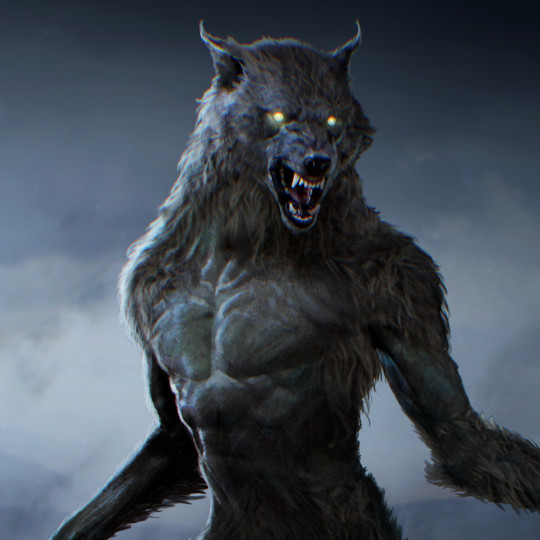
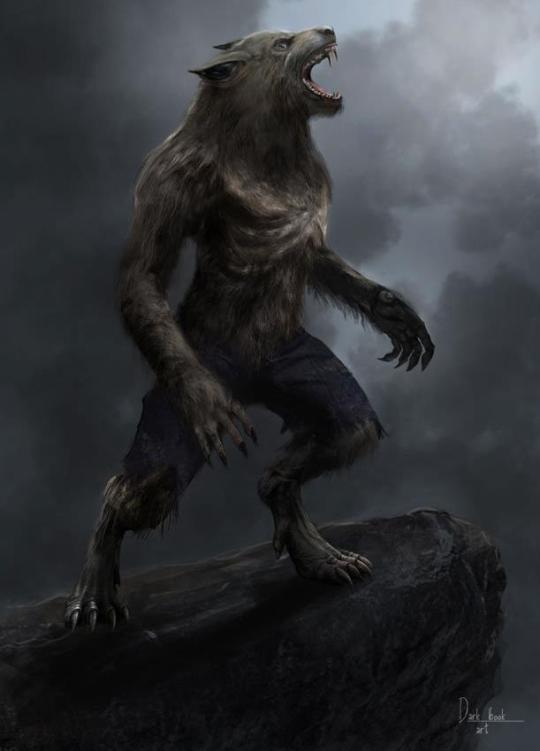

Moving on to my concept, I decided to have 3 phases of turning, consisting on:
Human: Basic, simple, boring human. No presence of wolf features whatsoever. YET they can still make use of their skills such as sensitive hearing, smell, extra strength among others.
Half-turn: Heavily inspired by Teen Wolf tbh, SOME features are present and can generally be controlled, such as eyes, ears, tail, fangs, claws. Can even be confused for hybrids. (sumn like this please appreciate my art)
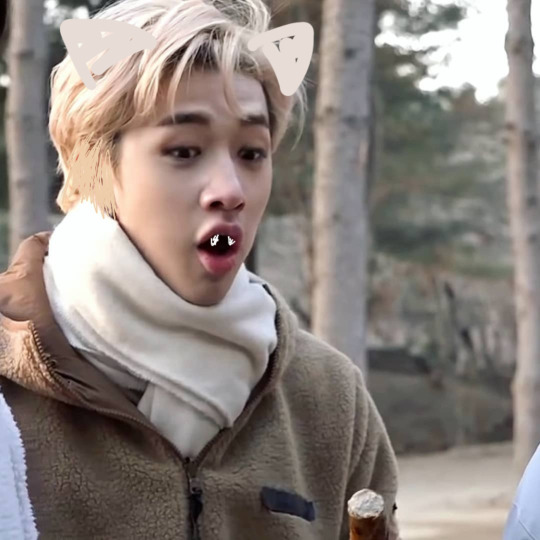
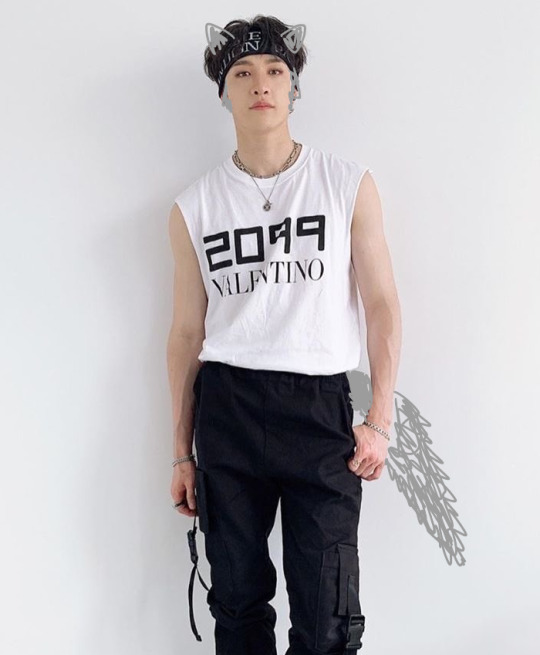
Full-turn: they become big scary fluffy puppies. Let’s remember how they look like.
Channie Chan Chris


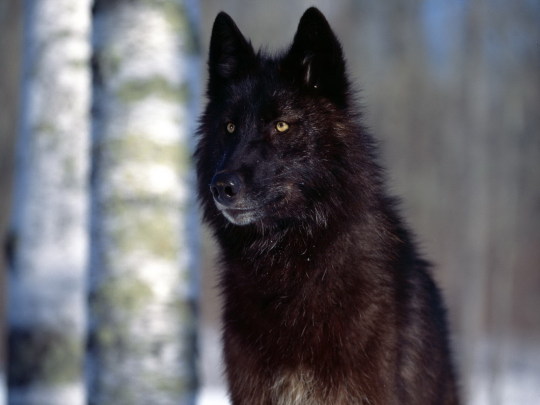
𝕿𝖗𝖆𝖓𝖘𝖋𝖔𝖗𝖒𝖎𝖓𝖌…
As mentioned before, transforming depends on which story you know and what you’re settling for. Generally we always talk about bites and deep scratches. Some of the most known stories about how to become a werewolf are being the 7th boy child born in a family on a full moon, or in Greek mythology, Zeus transformed some dudes into wolves after they tried to feed him human meat. There’s many different stories you can pick from, they’re just one Google away~
On my concept, though, the only way to transform is through a bite, even though I always keep options open.
I will probably be talking about the 3 types of wolves and deepening this a bit more later on.
🌙 𝕳𝖊𝖆𝖙 𝖛𝖘 𝕽𝖚𝖙.
Imma give you a wolf biology class because I know too much useless info and I WANT TO.
Rut: The rut is the mating season of certain mammals. The rut is characterized in males by an increase in testosterone, exaggerated sexual dimorphisms and increased aggression and interest in females.
Heat: The estrous cycle or oestrous cycle is the set of recurring physiological changes that are induced by reproductive hormones in most mammalian therian females. Estrous cycles start after sexual maturity in females and are interrupted by anestrous phases or by pregnancies. This cycle presents four phases, the one known as “heat” being the second one, estrus or oestrus, that refers to the phase when the female is sexually receptive.
What are seasonal breeders and what is mating season?
The breeding season is when seasonal breeders reproduce. Seasonal breeders are animal species that successfully mate only during certain times of the year. These times of year allow for the optimization of survival of young due to factors such as ambient temperature, food and water availability etcetc. Male seasonal breeders may exhibit changes in testosterone levels, weight, and fertility depending on the time of year. Female seasonal breeders will have one or more estrus cycles only when she is “in season” or fertile and receptive to mating.
Wolves fall in all of these descriptions.
What does all of this shit mean and why do I care lmao?
This means that if this was a logical bot I should only be doing NSFW like one week during 4 months a year LMAO no frfr
This basically means that RUT and HEAT are the seasons when the MALE and FEMALE respectively are ready to mate with each other to reproduce.
I’ve seen many male idol hybrids having heats instead of ruts, which I have no problem at all with and am sure no one else does really, but I think you should KNOW that a heat would not make them want to fuck, but get fucked. Heat would be the need to be filled and not fill others. A heat and a rut does NOT have to equal dominance or submissiveness in bots, anyway, that would be like saying being top or bottom determines who is dom/sub and that’s wrong, so just a PSA I guess.
Now, how does this affect my CB and ABO concept?
I’ve never, anyway, read anywhere of classic werewolves reproduction, which leads me to believe that they’re probably sterile. So I will stick to real life wolves rules but on my own way. Wolves are even monogamous and I dont go by that one lmao.
Reproduction rules on my ABO are really simple, ruts are once a month, around 5 days, and each of the guys have different characteristics for them. They’re only capable of getting someone pregnant during ruts, too. I just generally believe all girls are on the pill tbh and I never really use condoms but guys irl please practice safe sex wrap your or your partners willy before going freaky and stay safe.
Not sure if there’s something else to mention here? Let me know.
🌙 𝕸𝖆𝖙𝖊𝖘…
Mates are the wolf equivalent of soulmates, but that’s bullshit. I mean, I’m not gonna say they’re not real, I just mean that the general idea of only one person for the rest of your life and if it’s not them you’re miserable is dumb when we’re talking about beings with feelings. Did you know wolves irl are monogamous and mate but if their mate dies they just look for another one and move on? Now you know.
The thing with mates and marks, in my humble opinion, is that they don’t mean anything. Peoples hearts change, feelings come and go, and my wolves are NOT about to drop everything they have for some person they don’t know who happened to be their true mate. In fact, Channie is the only one who believes in them. The mates issue is a bit complex if we think about it over each of the Chan’s, but on a general idea, the mates are not exclusive for the guys, and I’ll probably make a tmi on the boys at some point, but Chan met his mate and it didn’t work out, for example. Mates go further than the marking, btw, mates are a special, cosmic bond. Marks are just that, marks.
And talking about that, we do not vibe with marks. The original folklore states marks as the way a wolf has to claim their partner as theirs and keep away others, especially from an alpha, and they’re supposed to go both ways, so marks between human/wolf, for example wouldn’t be possible. There’s also two marks.
The first bonding mark is generally given during sex between mates and heals, and the second one in front of the pack (there’s a whole social status thing involved here but were not touching that yet) and its permanent. Also marks are literal WOLF BITES so no, they’re neither small nor cute. Just look at these teethies and picture the scar in a neck-shoulder. That’s your bonding mark.
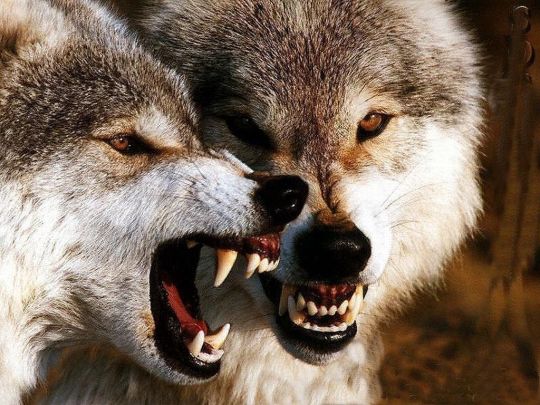
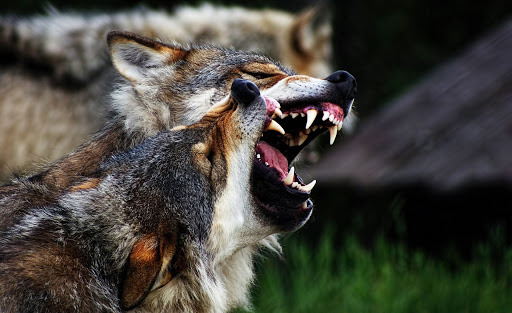
(they're cute tho I uwuuu)
What I’ve been reading around in fanfics and seeing around is that bots have been mated and claimed with marks, which is ok if you’re into that. My chan’s, though, find physical marks archaic, possessive and toxic. And honestly I personally do too.
You may have noticed by now that even though the boys are quite possessive, they’re never trying to scare away others and their sole way of marking is love marks that heal eventually and scenting. Permanent marks are a nono.
They will NOT mark anyone as their mate. Especially Channie plz he’s baby.
This is a personal decision and it does not mean that marking is RIGHT or WRONG. I just personally see marking bites as marking your partner with fire or something and I dislike the idea a lot.
ALRIGHT I THINK THAT’S ABOUT IT FOR TODAY I FEEL LIKE I WROTE TOO MUCH ALREADY??? Feel free to ask questions or request certain topics! I think next topics will be Social Structure, Skills and maybe Self control or Moon Cycles.
If you read all of this WOW CONGRATS??? I LOVE YOU EXTRA MUAH
One question I got on the asks was “since their fur color seems to correspond with their hair color, what happens if they dye their hair?”
Nothing happens babe! When they’re half turned they will have really funny colorful hair, but when they fully turn their fur stays the same! hehe Don’t worry, Chan won’t be a clown red wolf heh
OK BYE MUAH MUAH
Tags (hmu for removal:] if you don’t care about this hehe)
@yandereminholee @bunjihyo @shinhaneul-oc @sub-chungha @song-mingi-cb @grungeyuta @yourhwaa @bunny-woong @princess-yeji @xash-axx @7deadlysins-chan @camgirl-jihyeon @hybrid-wooyoung @vampirehhj @ghoulxbaekhyun @mafiaxnct127 @deadly-skz-gods-cb @mafia-chaeyoung @vampiresanha @sub-minho @starsirah-oc @femboy-minho @subbyhyunjinchatbot @weeb-wonwoo @yandere-wendy @musiclovermino @galaxy-ateez @chanlix-koalas @vampirechangbinnie @mafiafelixlee @madmanwoodam @sweetandsleepyjamie @yanderedahyun @hunter-chaeyoung @hwangyeji-cb @artsydahyun @gamer-yeji @yourminju @seulgi-foxy @kittensua-cb @softbabieinnie @softboyfriend-cb @iceskater-sana @irregularchatbot @yandere-miya @doll-seungmin @skz-cb @subbylino @babie-sanie
45 notes
·
View notes
Text
If Katekyo Hitman Reborn ever gets remade, this is what needs to happen.
Yeah this is gonna be a long one
Katekyo Hitman Reborn (Which I will abbreviate to khr for convience sake) was a manga published in Shounen Jump Weekly (yes that Shounen Jump, where all the big boys come from) and created by Amano Akira who did both the writing and illustrations. It began appearing in the magazine in 2004 where it had a solid eight year run until 2012 where it finished up with 409 chapters and 42 physical volumes. Only sixteen of these volumes were released in English by Viz Media.
The series was incredibly popular in Japan and even outside, becoming one of the best-selling Shounen Jump manga with over 30 million tankobon copies being sold worldwide. At it's peek, khr was at the same level as some of the shounen giants such as One Piece and even Naruto, with it's popularity even spawning spin off games and a spot in crossover games, the most famous being J-Stars Victory VS.
If you've seen the anime or read the manga, you'll likely know the plot, and reading all this is a big waste of time. But for the ones who have clicked on this post without knowing what it is, here's a brief summary. Khr centers around a loser middle schooler named Sawada Tsunayoshi (shortened to Tsuna) who sucks at everything from school to sports, having no friends and tripping over his own feet, who one day receives a home tutor thanks to his incredibly concerned mother. This home tutor is the titular Reborn, a baby with a fedora and a gun. Reborn is a hitman, and has actually been sent by the Vongola family, a mafia family that's regaled at the most powerful in the world (and this is a world where the mafia is rather powerful in itself vs ours which the mafia is rather small these days beside small areas). He has been sent to make Tsuna the next boss, as the current boss has no descendants left and Tsuna is the 'sole' descendent of the first boss. So, hence, Reborn has to take the loser Tsuna (deemed Dame-Tsuna which means No Good Tsuna) and make him worthy of the spot as Don.
A mafia story that has supernatural elements (because, yes, I forgot to mention but the mafia have superpowers) sounds like a really interesting battle shounen. If you've seen anything to do with this series, you've probably either seen little gun toting Reborn or Tsuna fully decked out with metal plated gloves and a flame on his head. Yeah, that's what most people think when they get into it, myself included.
But what you have to understand is that khr started as a *gag manga*. What that means, is that it was a comedy slice of life with the most over=the-top, explicitly Japanese humor, with some cringe worthy jokes that very much overstay their welcome. This tone continues on for a solid 61 chapters, before the tone shifts completely with a darker plotline that only thickens as time goes on. Even so, occasionally the humor and jokes remain, although different. As many people on this website, especially fic readers are aware, there is such a thing as 'crack humor', and there is a sub genre off that called 'crack treated seriously'. 'Crack treated seriously' is what the rest of the manga is. Amano Akira has, creatively, used some of the bigger jokes and gags and given them actual feet to stand on. Remember how Reborn is a baby, yeah, there's a reason for that now. Remember the time travel bazooka? Well that's a huge plot point now.
In the anime, the slice of life stuff is spread out. From episode 1 to episode 20, it only adapts bits and pieces of the first 61 chapters, including the most important ones for character introductions. The first 10 are the most important, I won't openly recommend you skip to episode 20, but I did it so you are free to as well. The rest of the slice of life, which many wrongly interpret as 'filler' is spread across the first 100 episodes between major battle shounen arcs. On the other side of things, after the first 61 chapters, most of the manga is full out battle shounen, with occasional jokes and slice of life elements peppered in and some gags that have no story meaning hanging around like annoying flies.
Both of these approaches have positives and negatives. On the one hand, in the anime you have sudden breaks between massive, high stakes arcs to end up with gag comedy episode with missing character development. In the manga, you have to slog through a full 61 chapters of overused jokes to get to, what some would call, the 'good stuff'. While others do have a special place in their heart for the cringe of the first part, a general audience finds it hard to invest their time in such an endeavor to work through.
If there were to be a remake/new adaption of the manga, there would have to be several changes made. I'm sure it would benefit from these changes and some need to be made to fit into the general landscape of the current world of anime.
First off, the animation studio that originally animated the series was Artland, a company that hasn't released an anime since 2017 and there last successful one was Mushishi Zoku, the movie spin off airing in 2015. But, the problem with this anime studio is the poor job they did in adapting the source material. The artstyle is incredibly lacking, and is likely due to low budget and man power. The second problem they brought with them is the harsh censorship the entire anime got, shown in these pictures below (with another major change being how they cut out a massive character arc that was likely cut due to the grim nature of it)



This shot below is completely missing from the anime.

The new adaption would have to be (and more than likely would be) picked up by a different animation company. My preferred choice would be one that specializes in fight choreography and also stays loyal to distinct art styles. If you think you've seen Amano Akira's style before, it could be because you've watched Psycho Pass, where she did the art and character designs.
The original seiyus were brilliant, however, especially Neeko as Reborn, Kondou Takashi as Hibari Kyoya, and Iida Toshinobu as Rokudo Mukuro, only to name a few. The music is incredible as well, with Sahashi Toshihiko on music The most popular piece of music from this anime is Tsuna Awakens. Several of the anime's openings are spectacular as well, seeming to have the budget that the core anime didn't achieve until possibly the middle where it's animation was more so spotty in terms of quality. In a new adaption, my desire would be for as many of these seiyus to return and old tracks from the OST to remain while new ones are created.
The trouble with adapting such a giant as khr would be the pacing and slice of life vs battle shounen that it has. Merging the two together to make it appealing to both old fans and outsiders would take a lot of work, patience, and belief. It would do better to stick closer to the manga's darker tone and remove less necessary gags but keep some of the more beloved ones (such as Hibari's 咬み殺す(Kamikorosu or "I'll bite you to death").
The condensing of the character introductions is very important if the anime is to become seasonal. One could argue that keeping the original pacing wouldn't be so bad when you're airing weekly for months on end, but when you're producing 12/24 episode seasons, filling up 20 episodes with character development and slice of life will turn away audiences who are there for the action. Heightening stakes, keeping in core serious character aspects, and speeding through less important characters to do more of a show don't tell approach, can get more general audiences engaged in the series early rather than possibly loosing a fair few viewers due to the slow start.
If a remake did this, it would definitely give the series a popularity boost and get it back on people's radars as one of the best shounen's of SJW and the mid-2000s.
#katekyo hitman reborn#khr#rant#hey give khr a remake already#it's 2021 come on#i wrote this at midnight so excuse me if it's riddled with mistakes#all my points are valid tho#don't deny it
2 notes
·
View notes